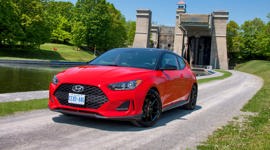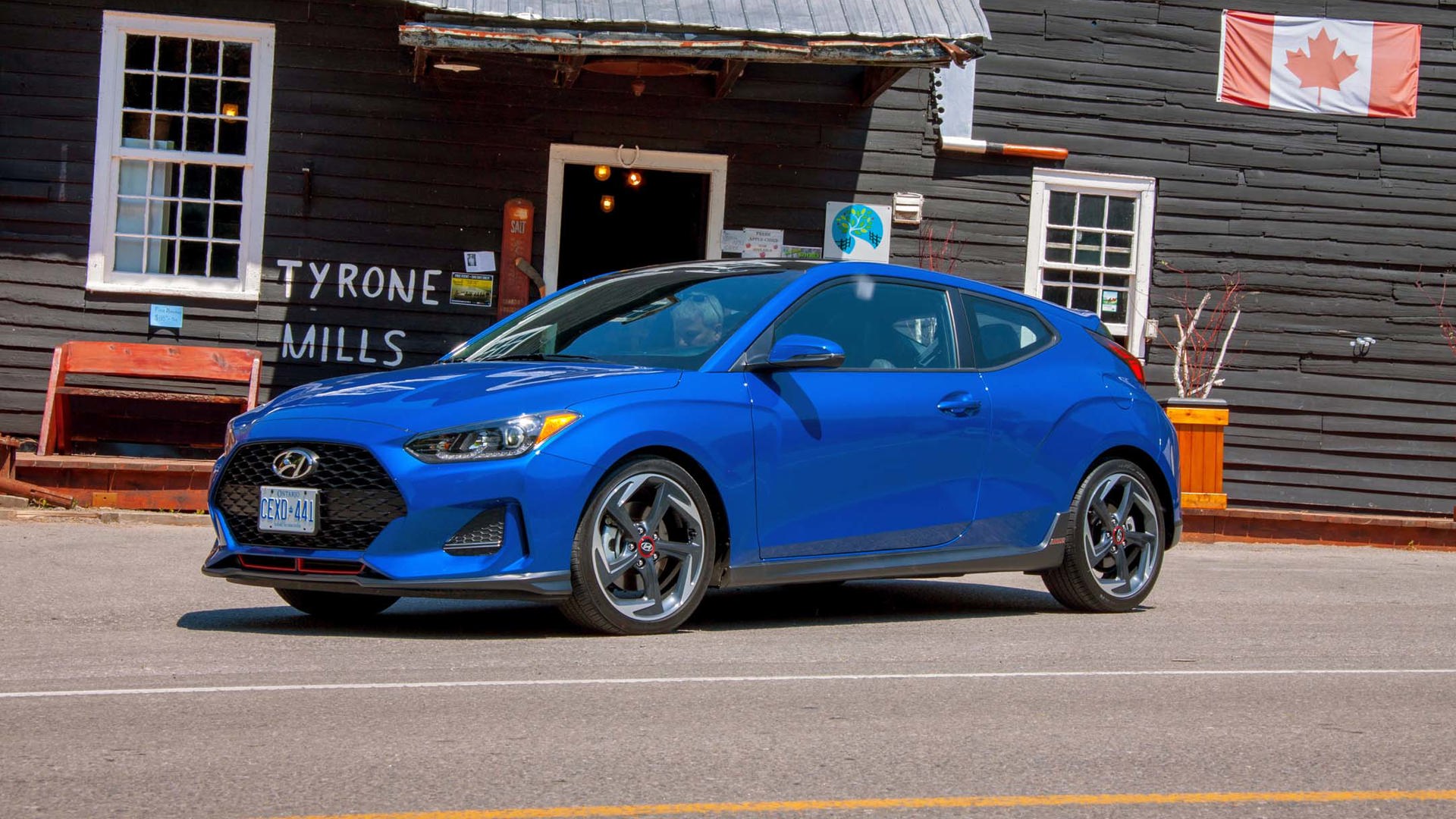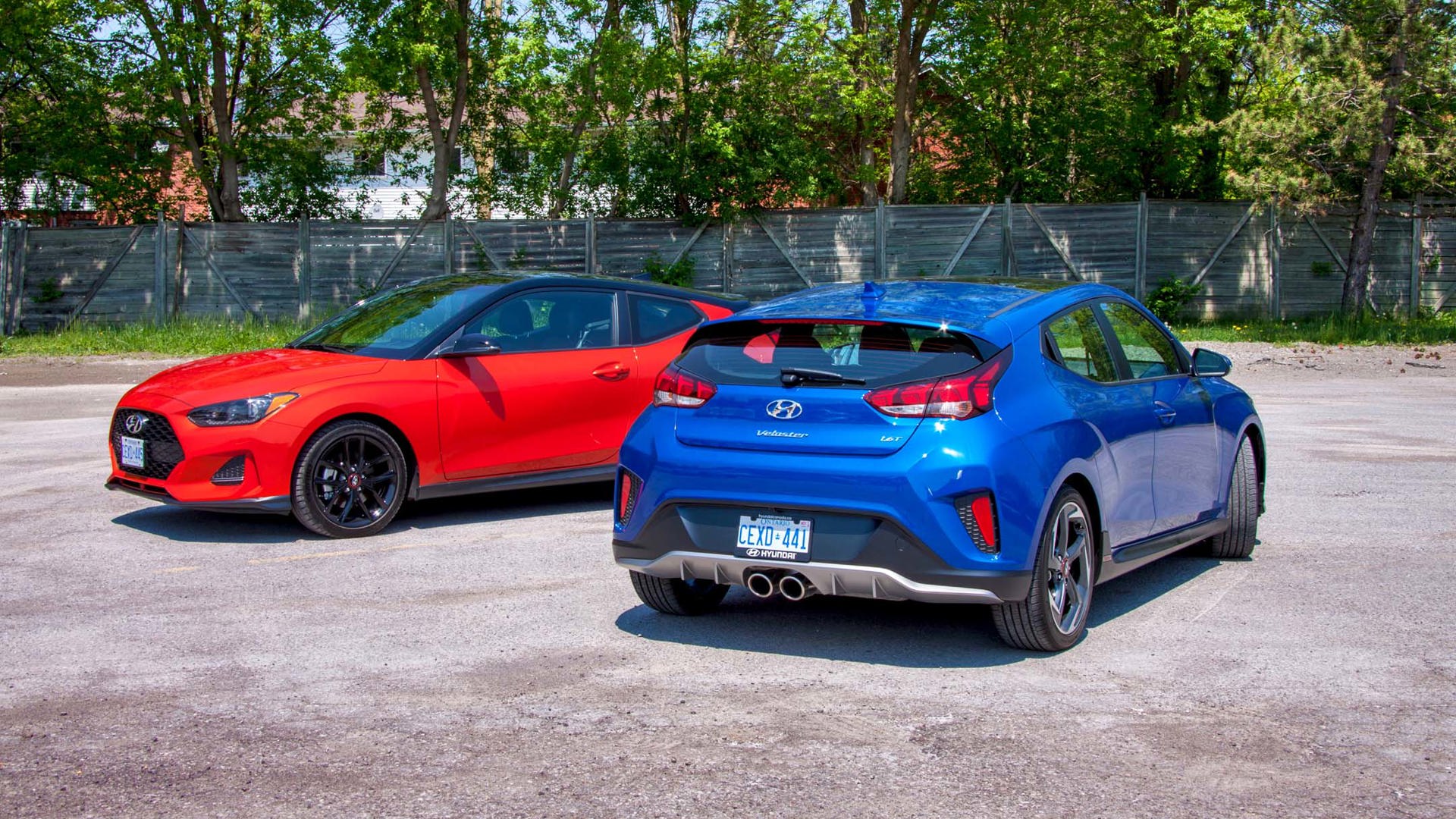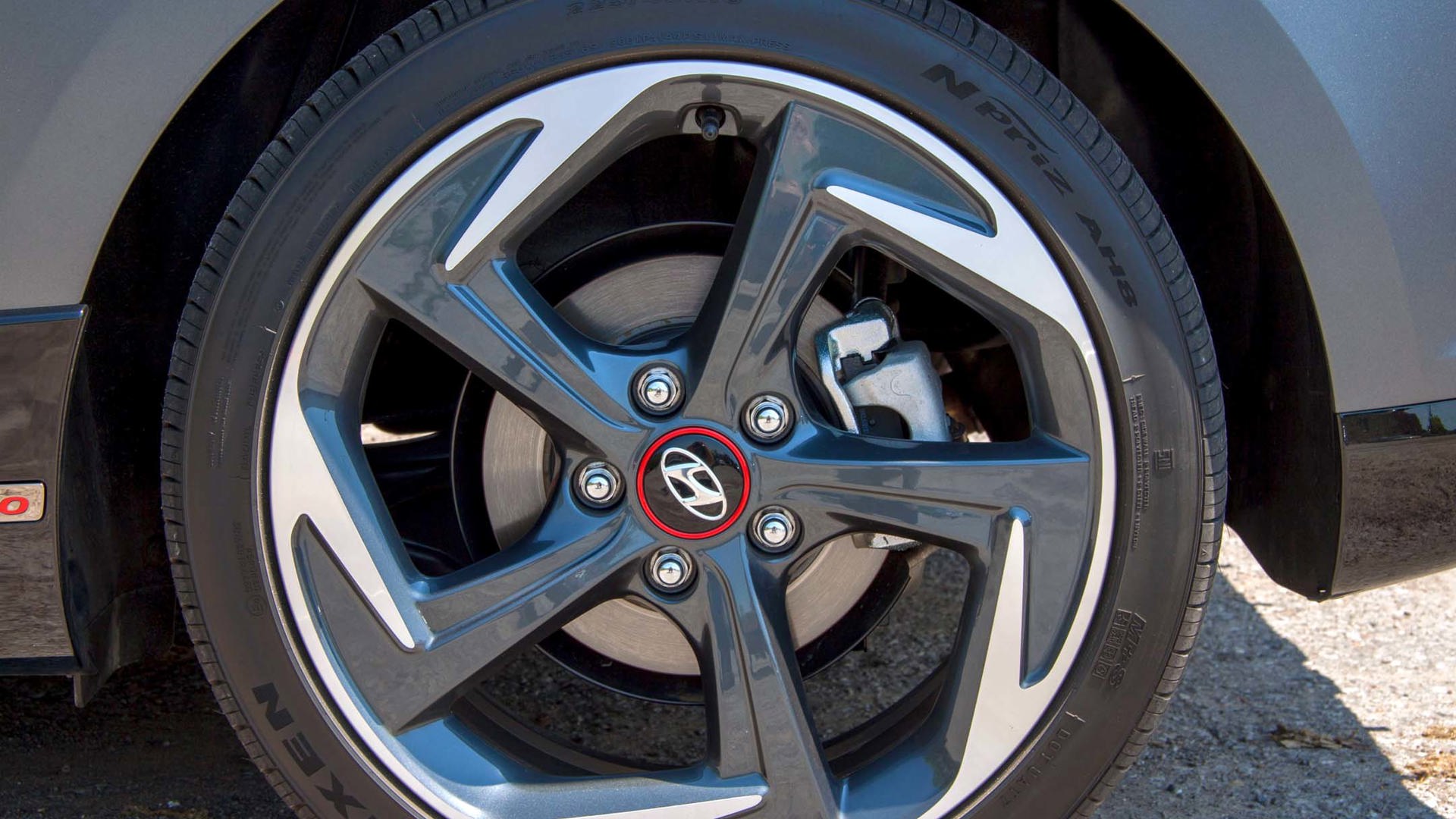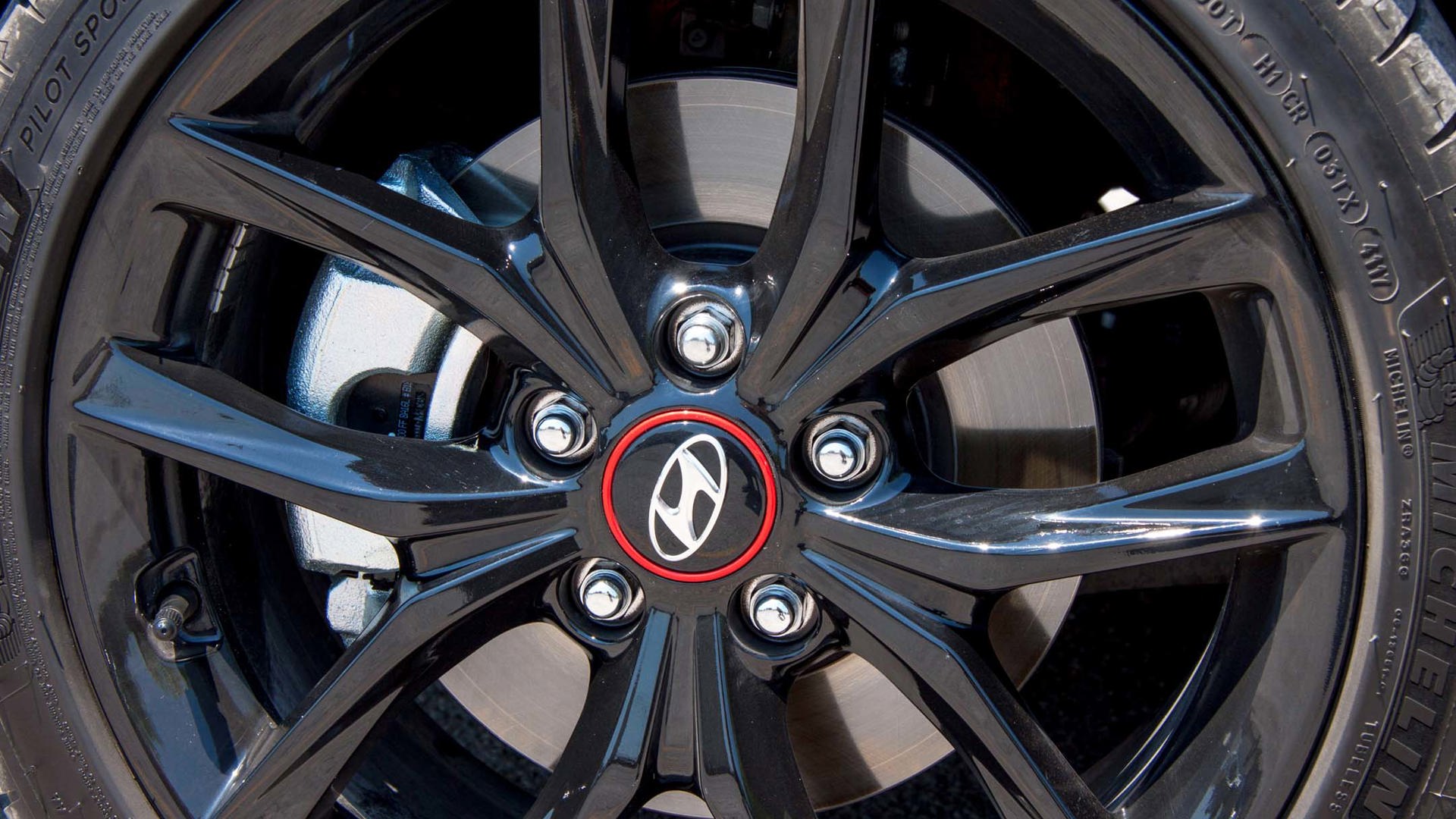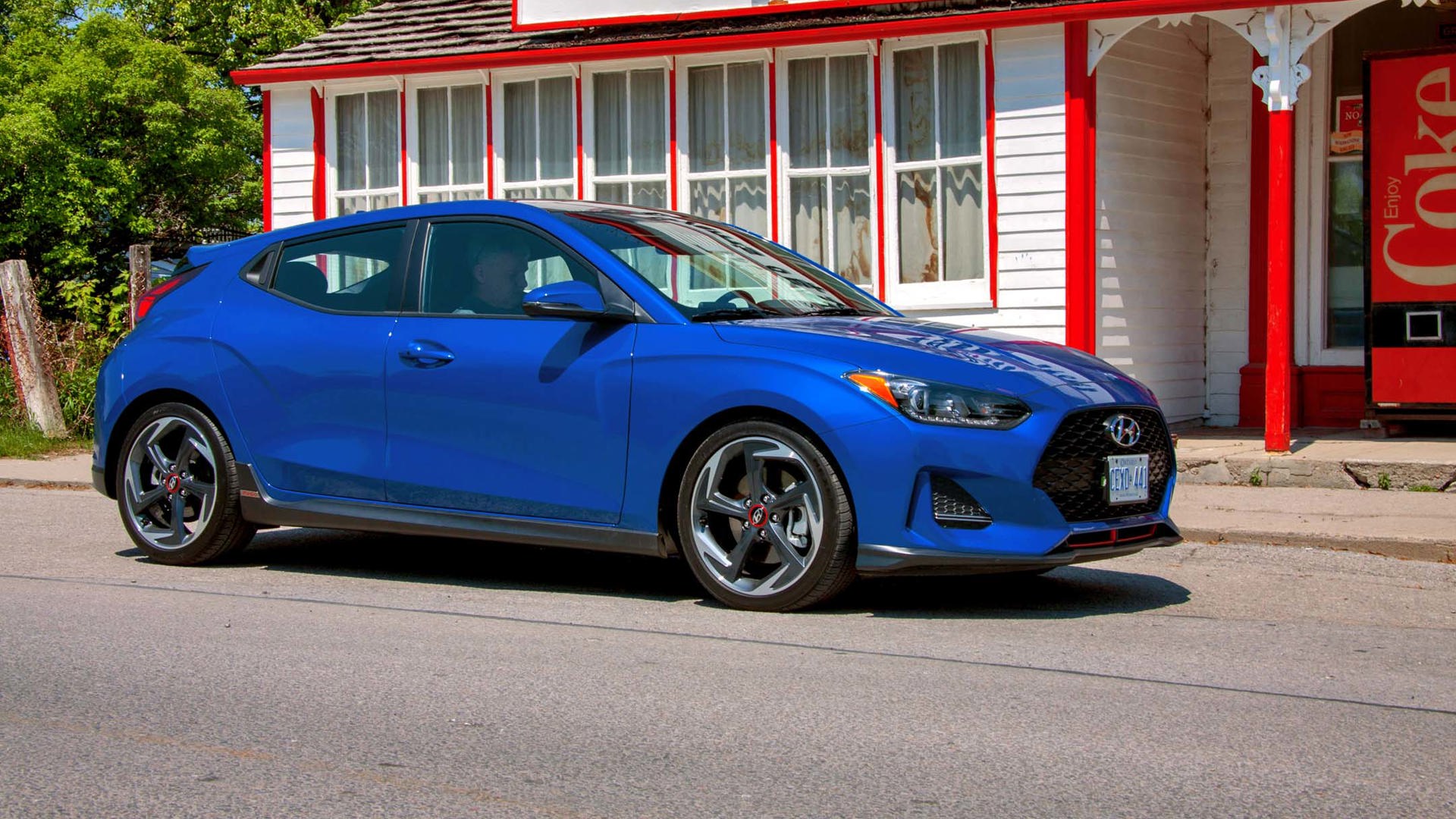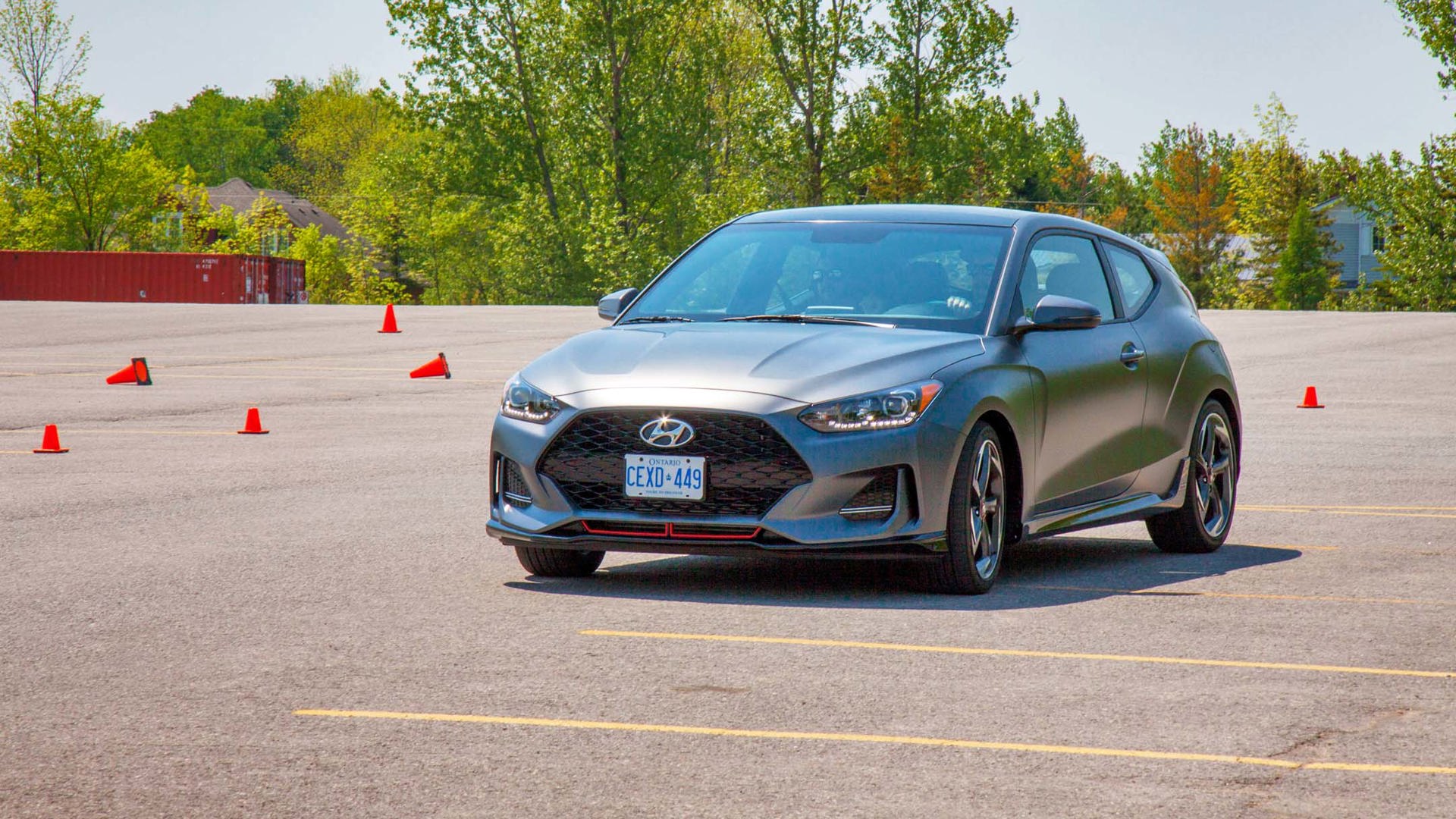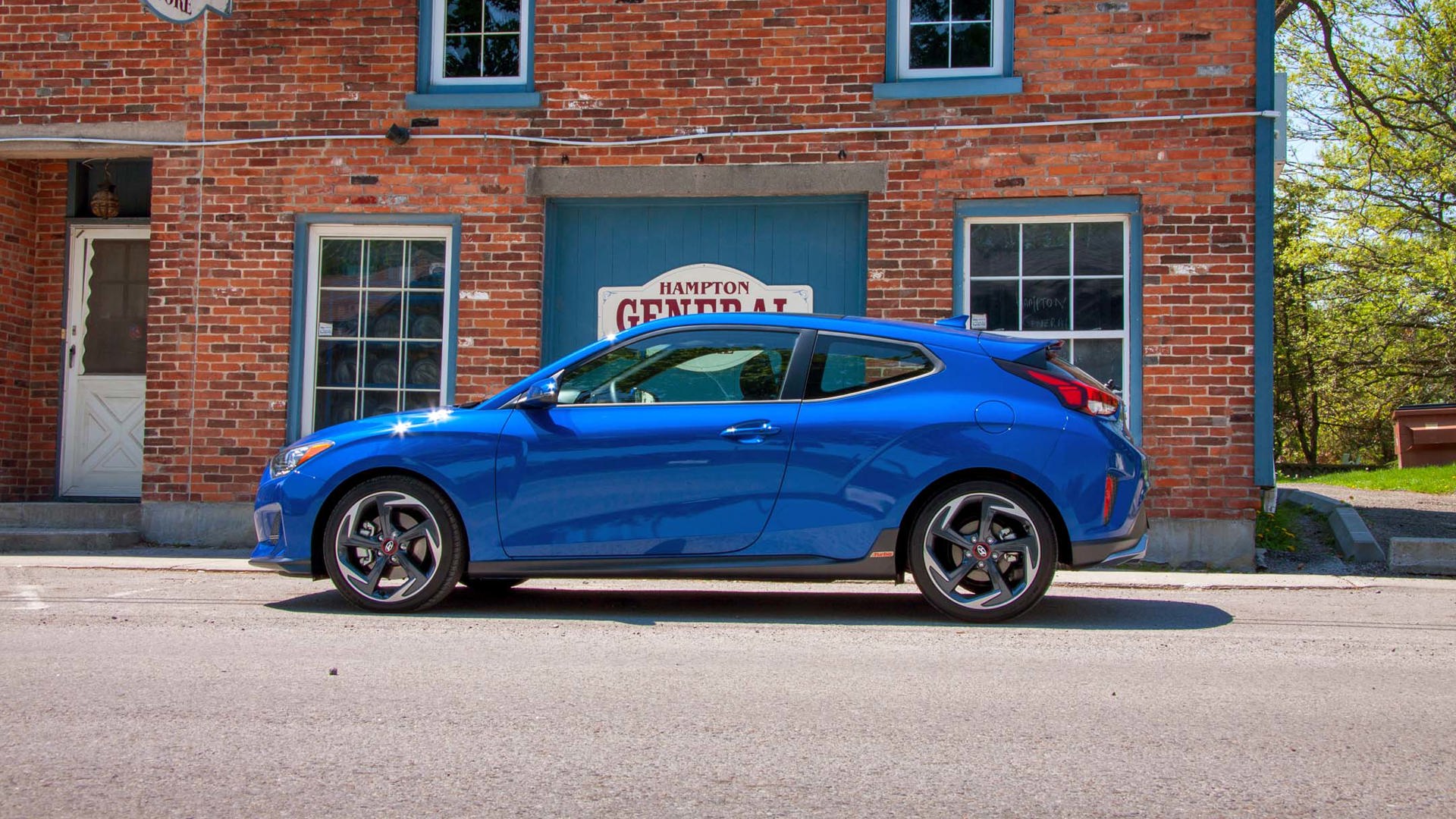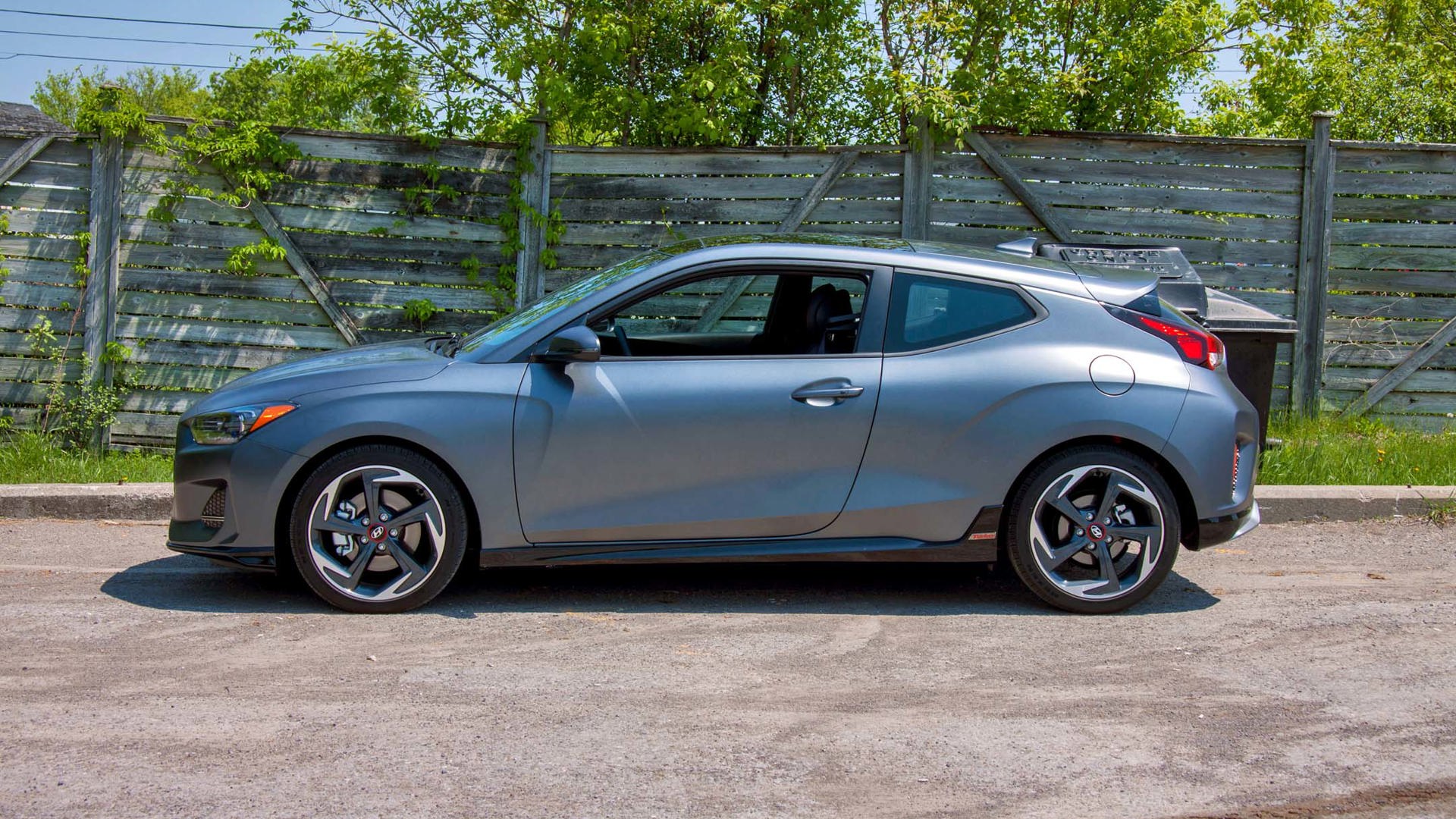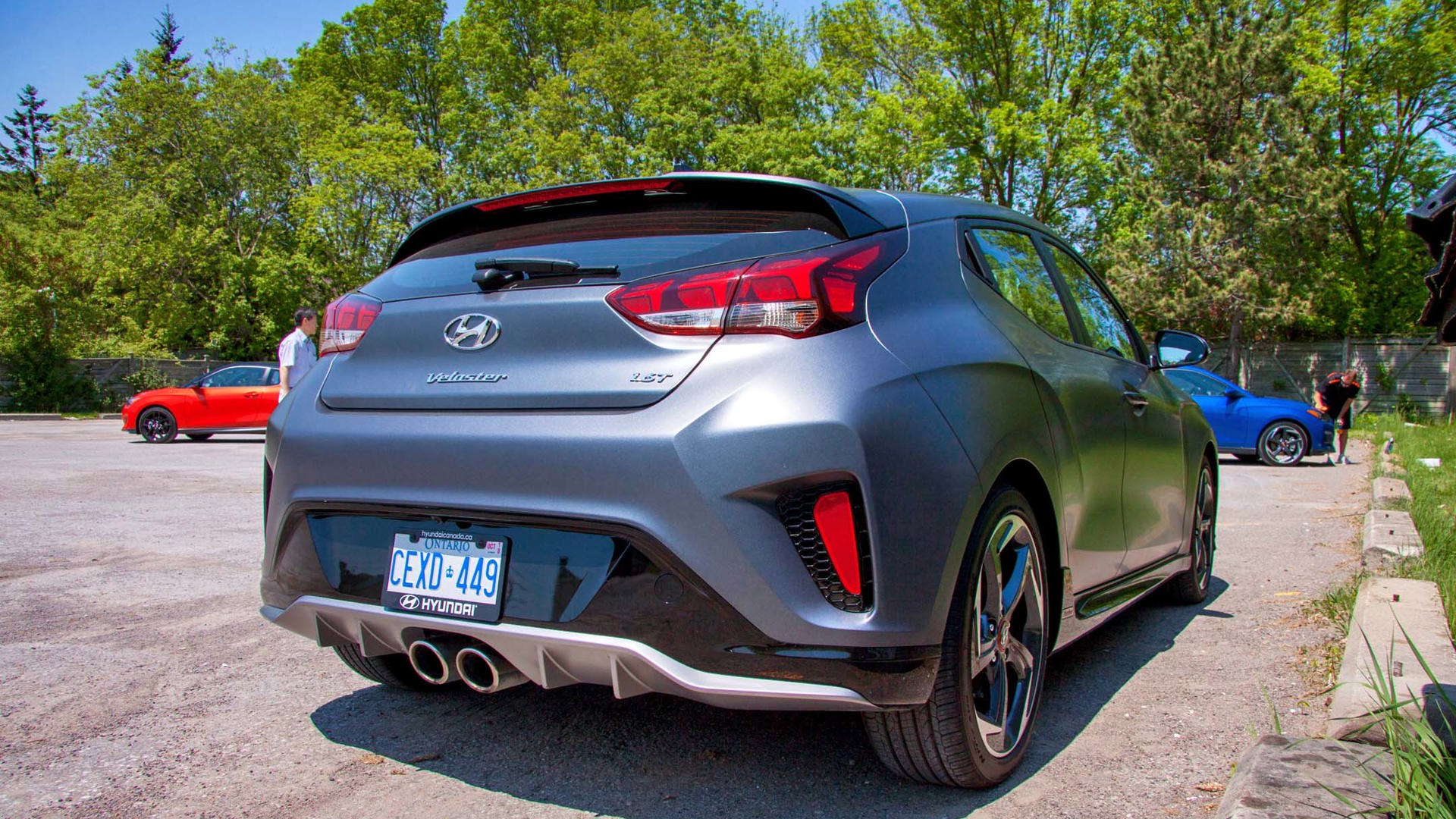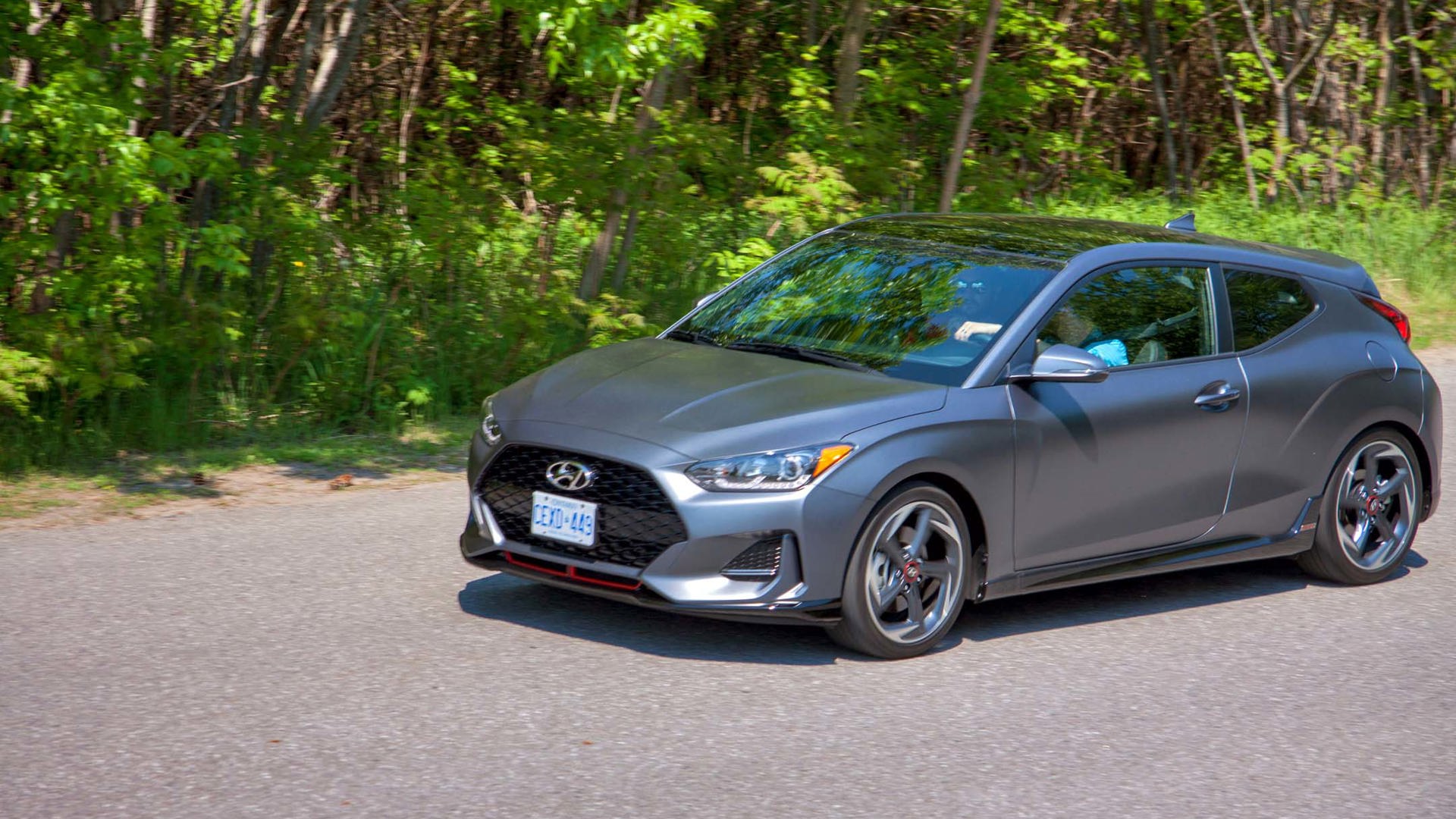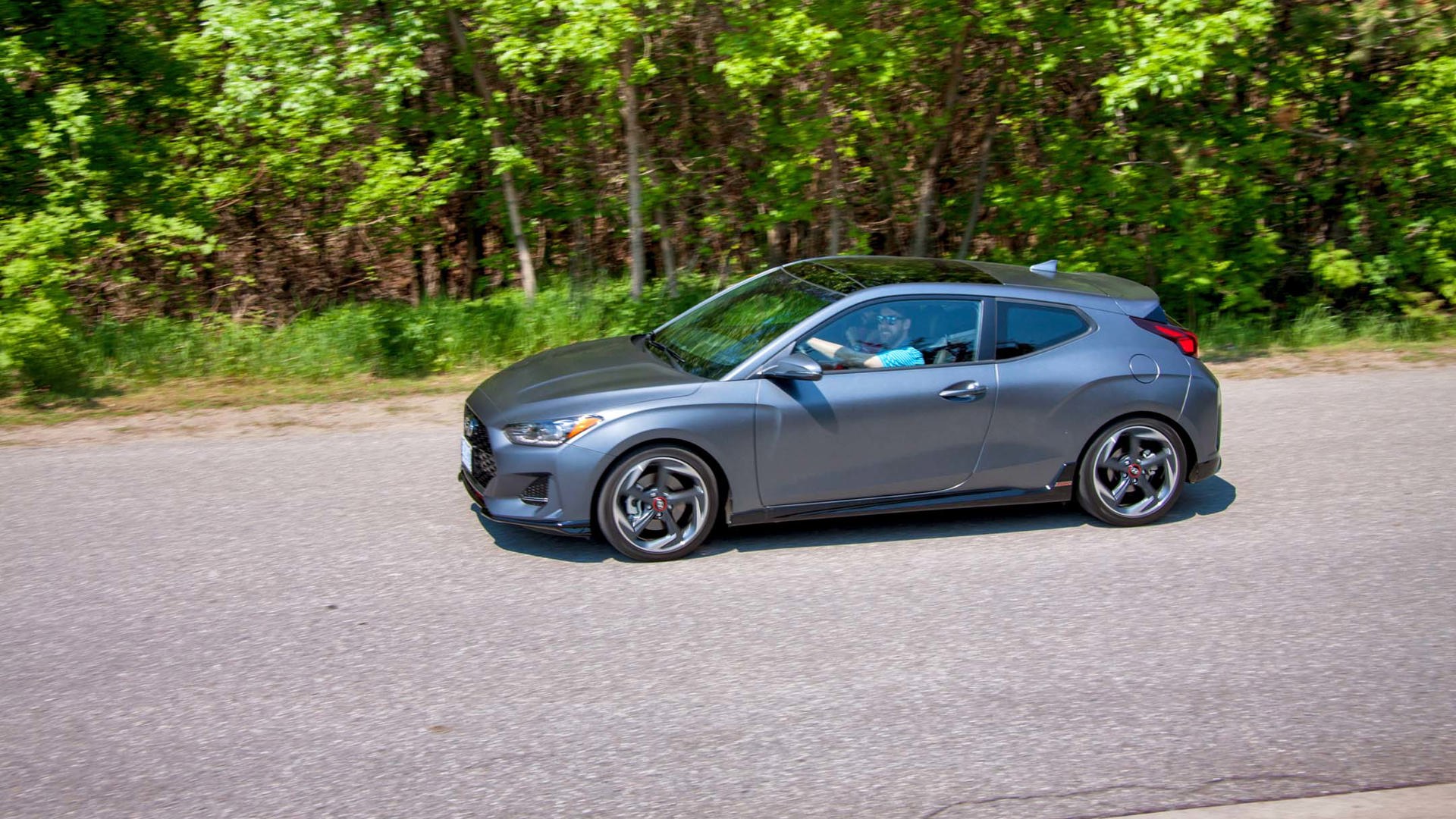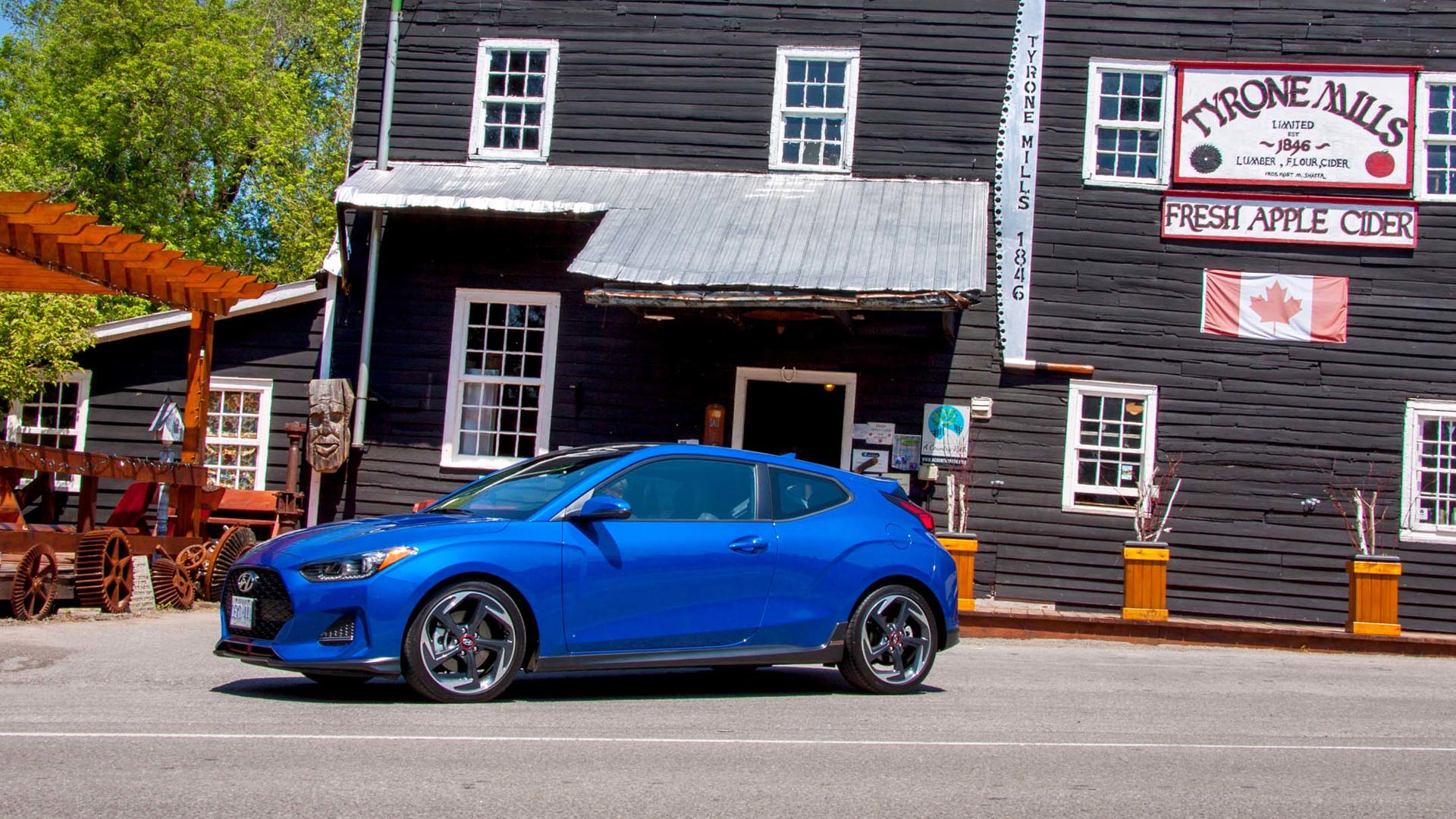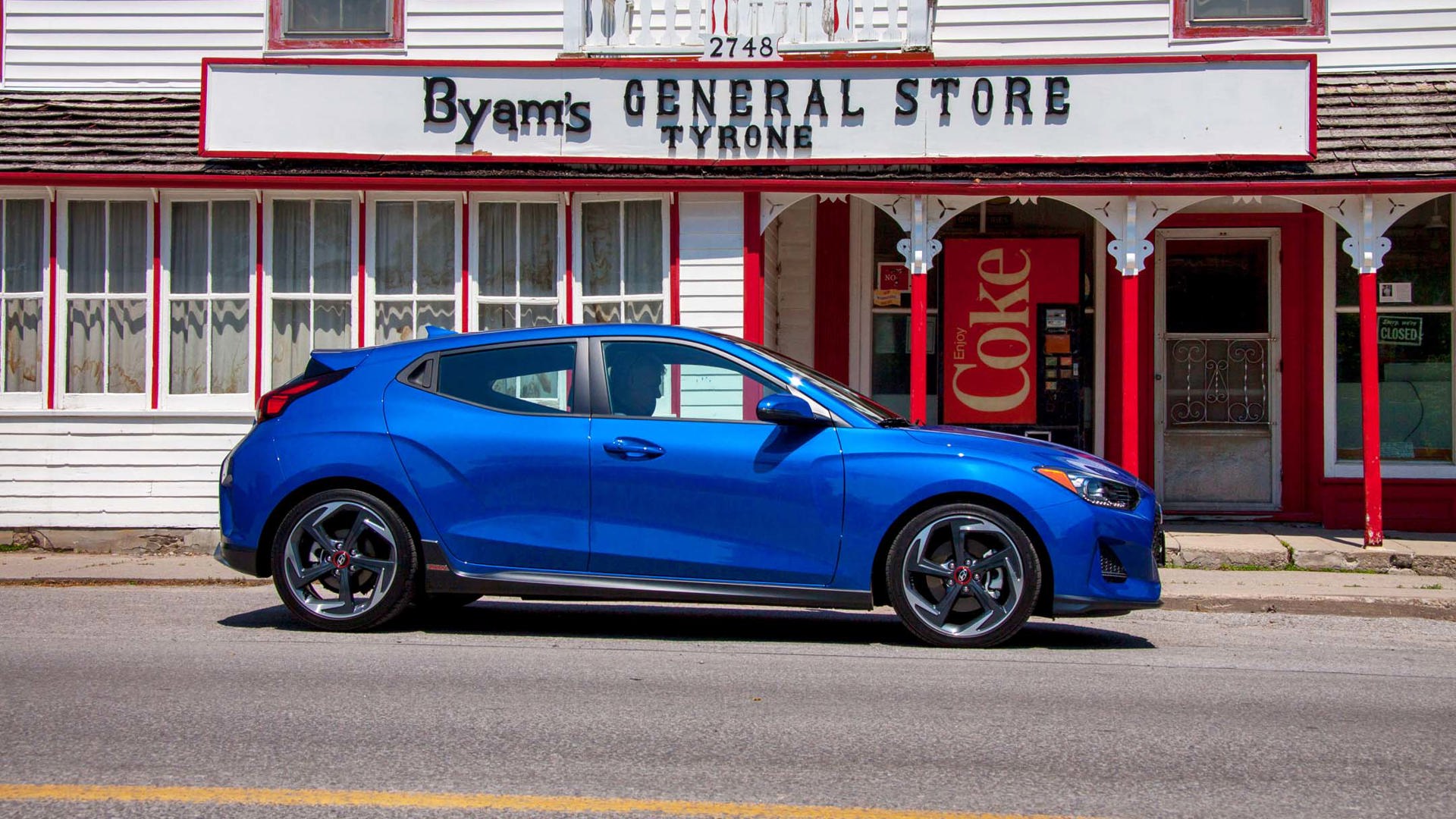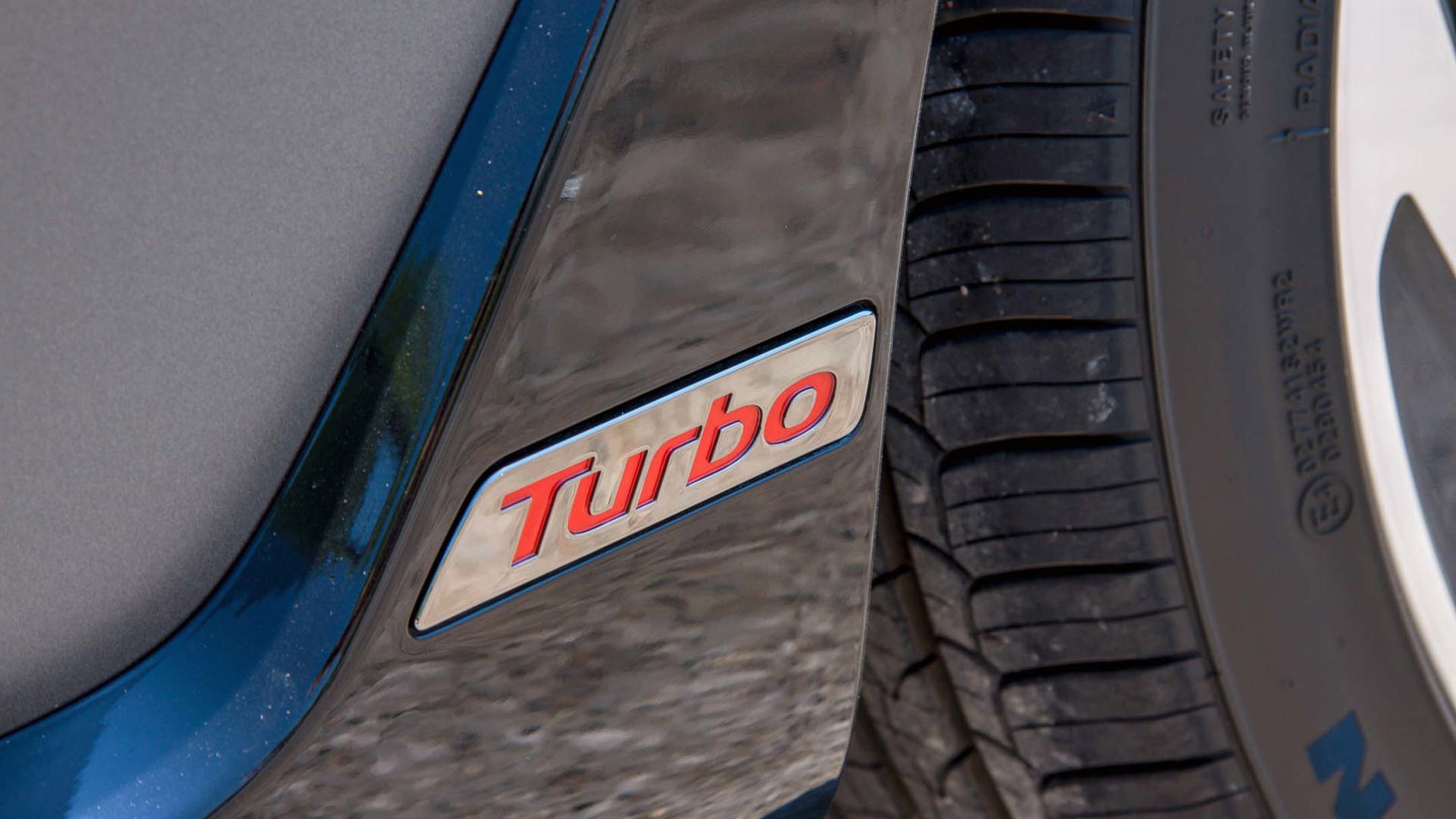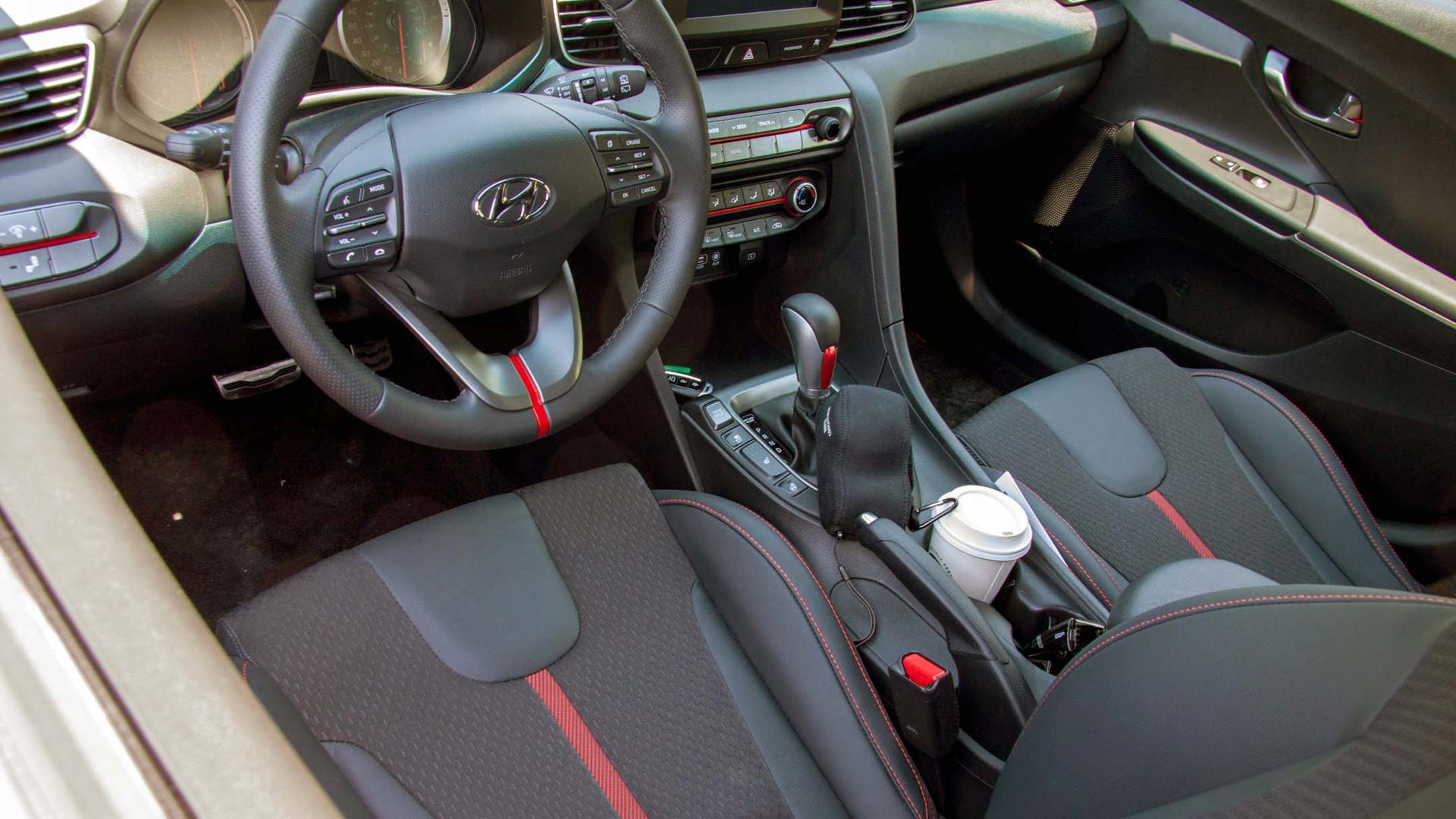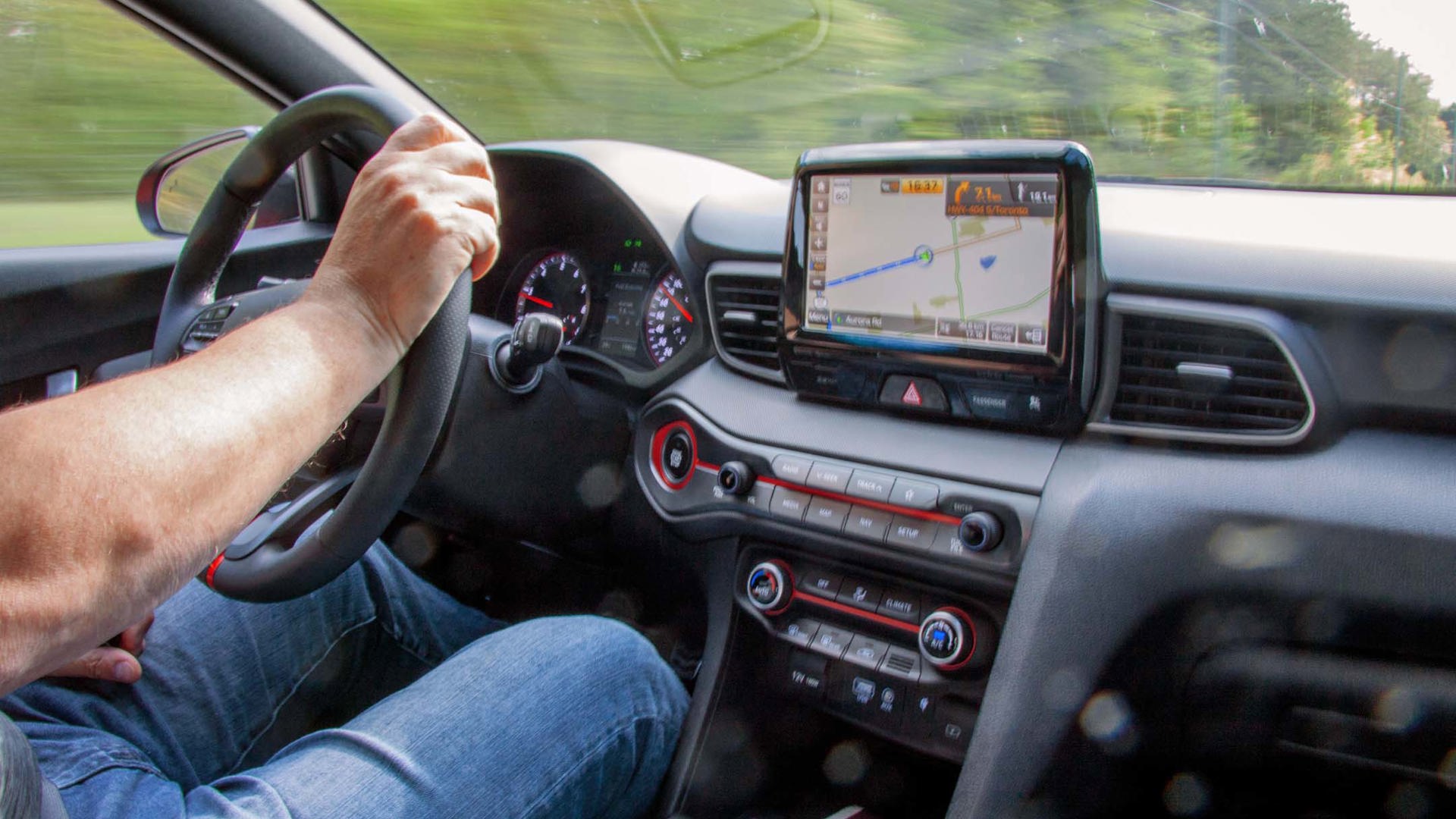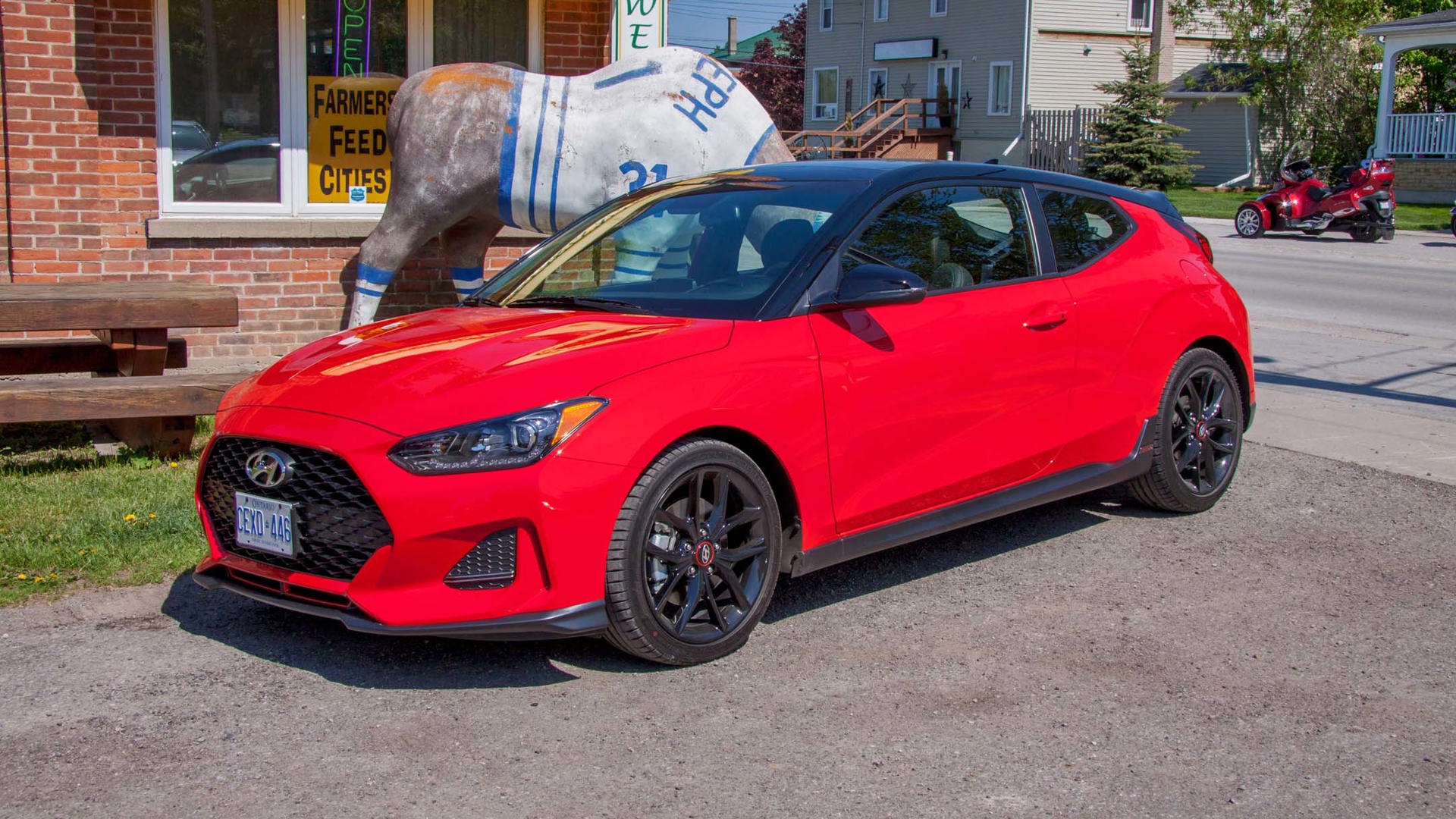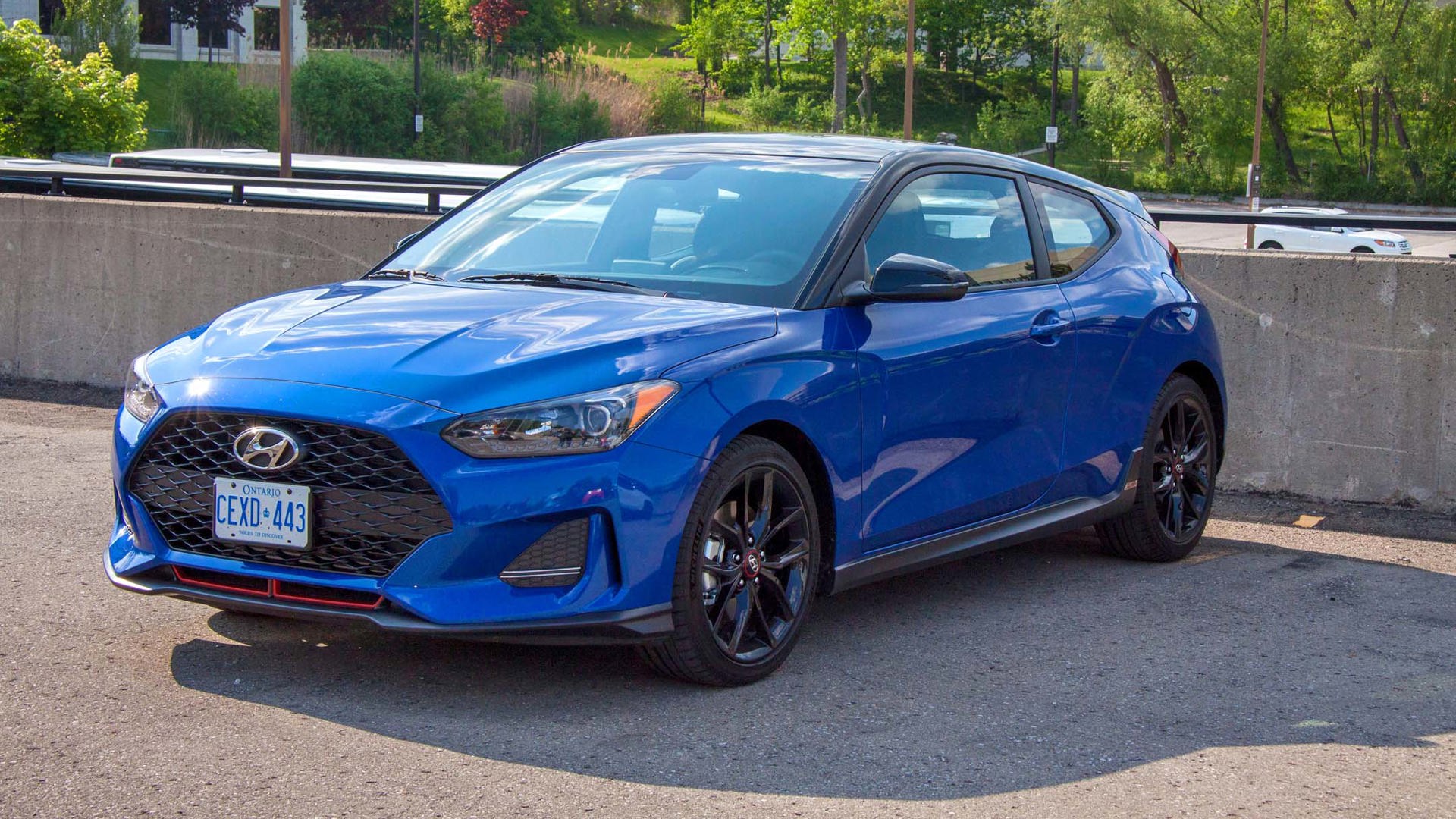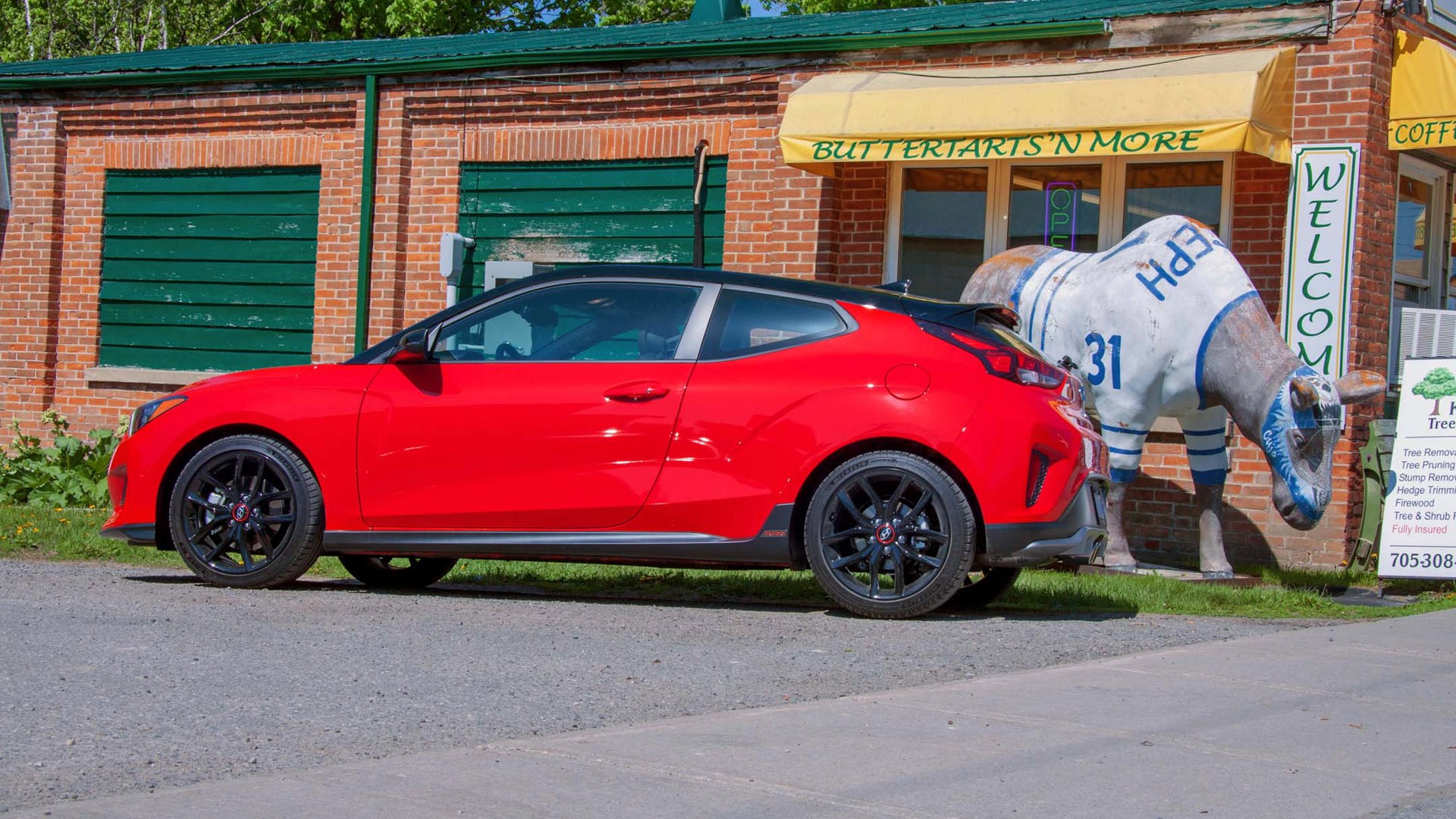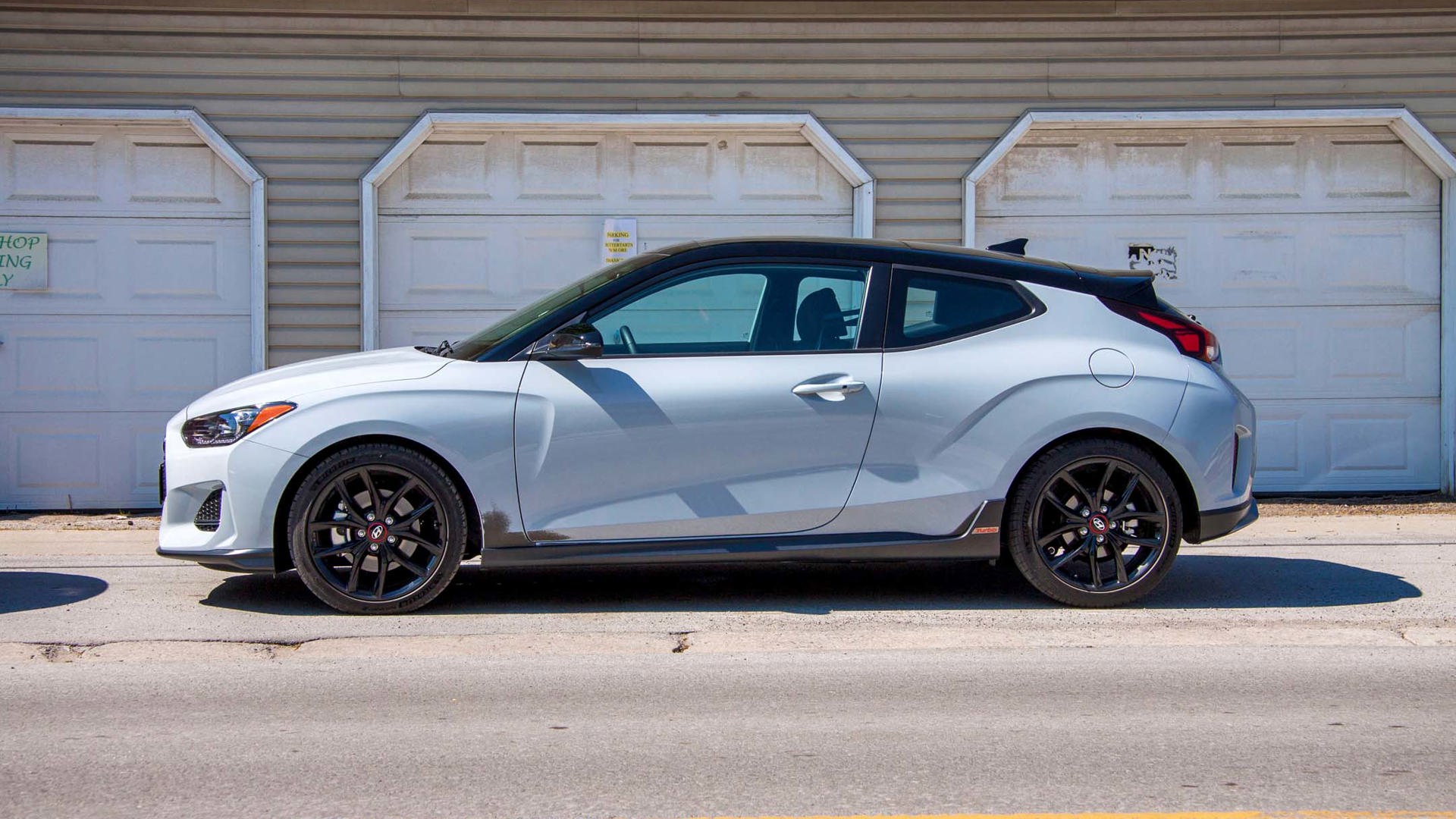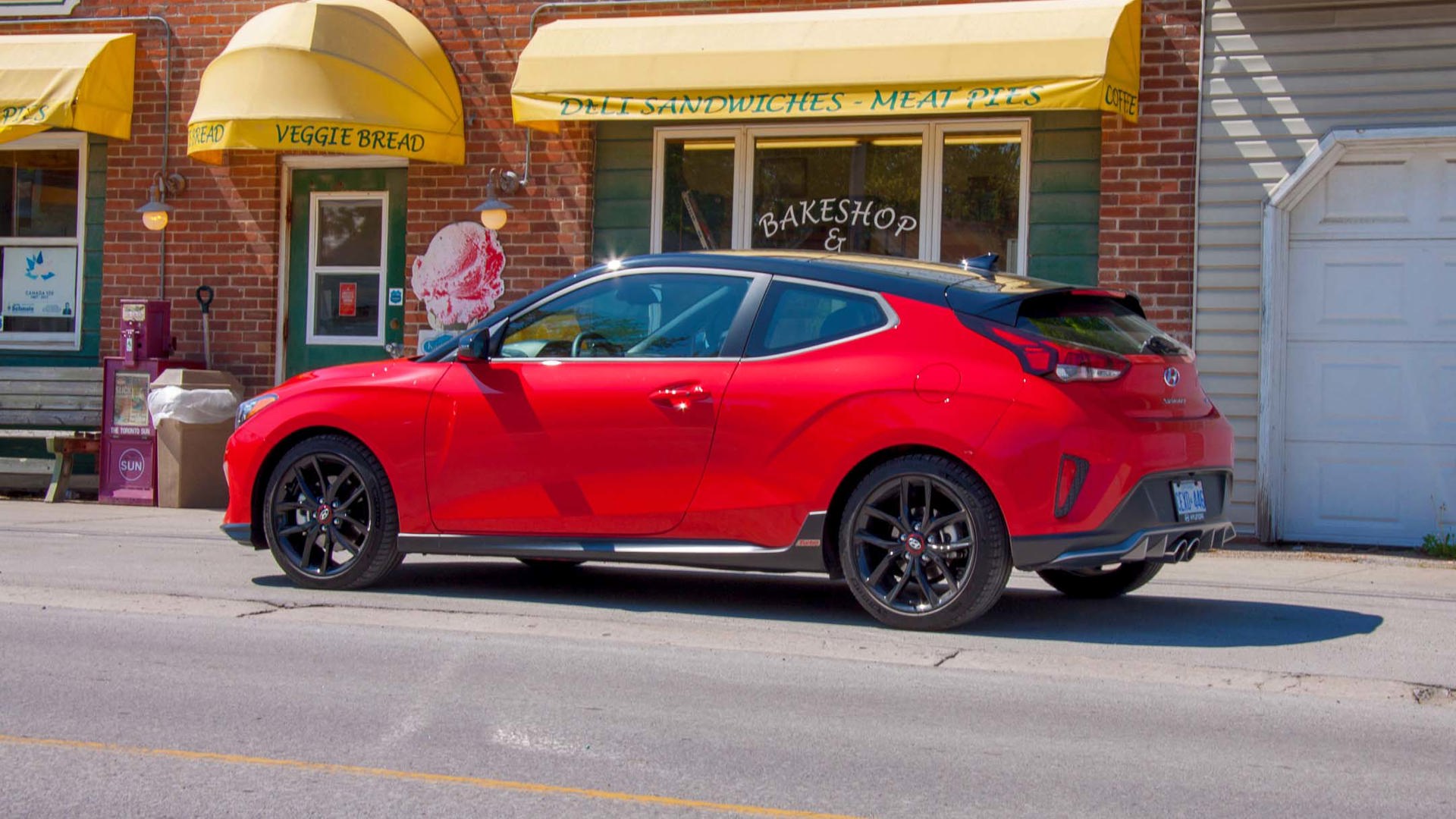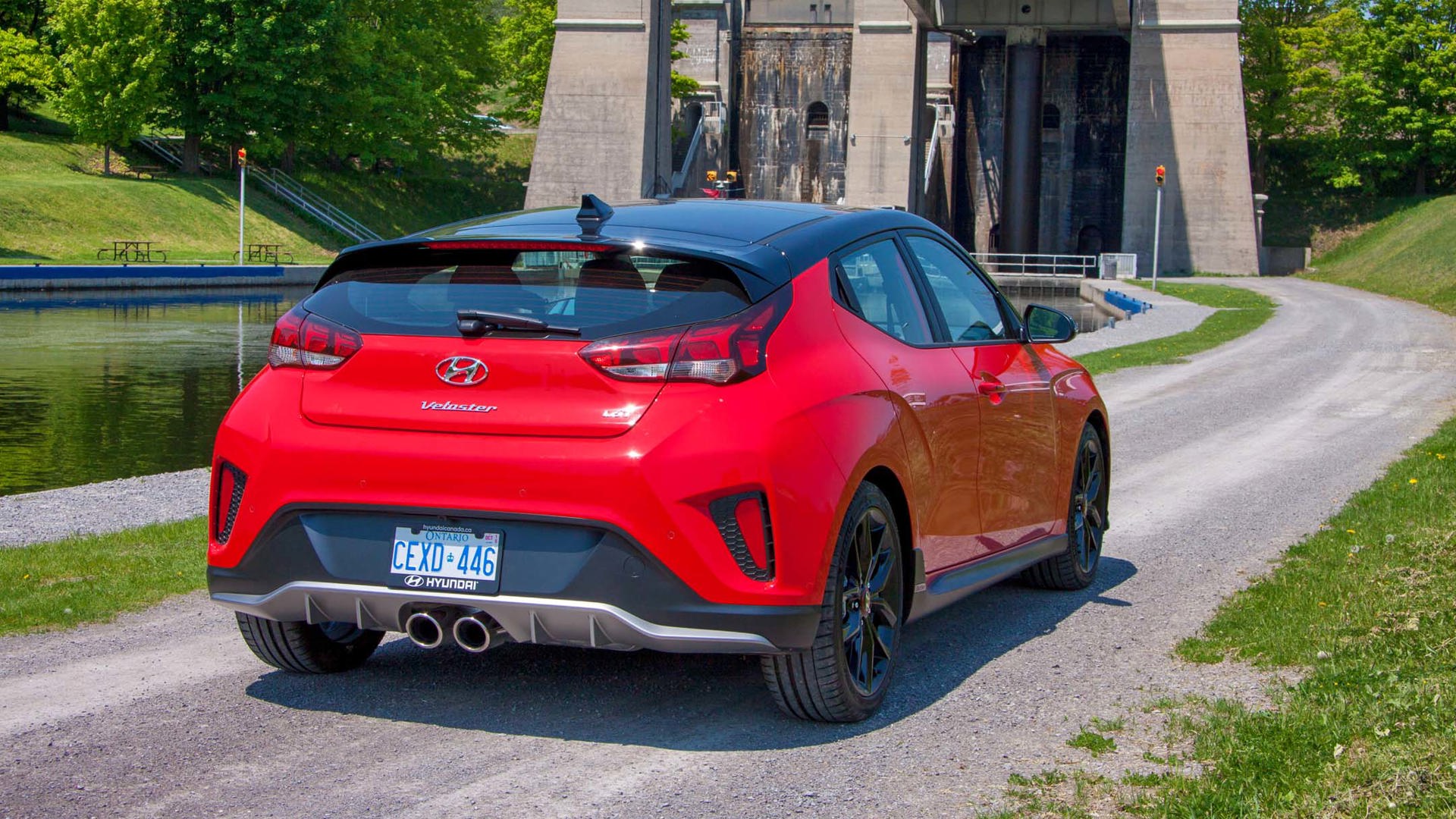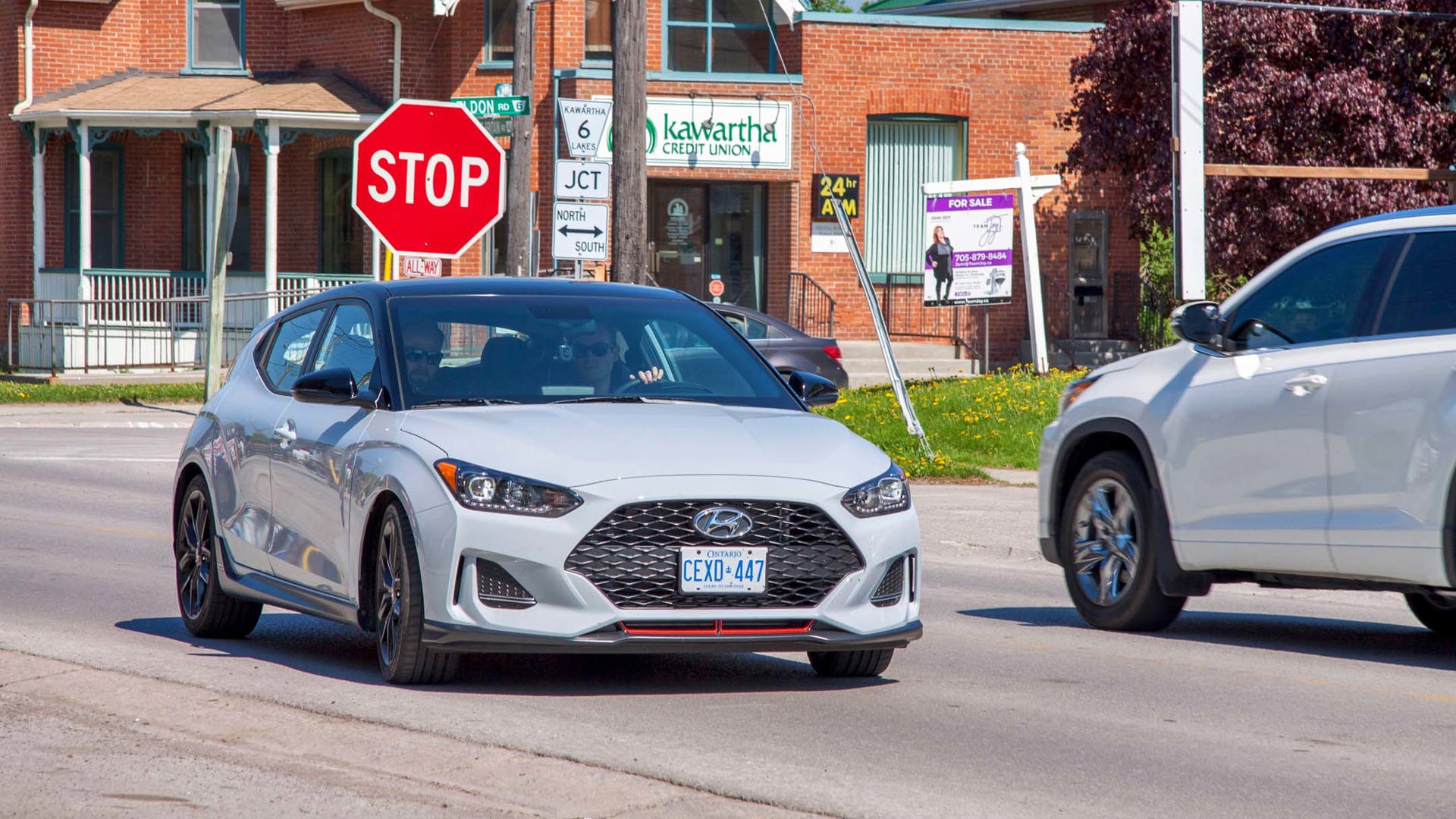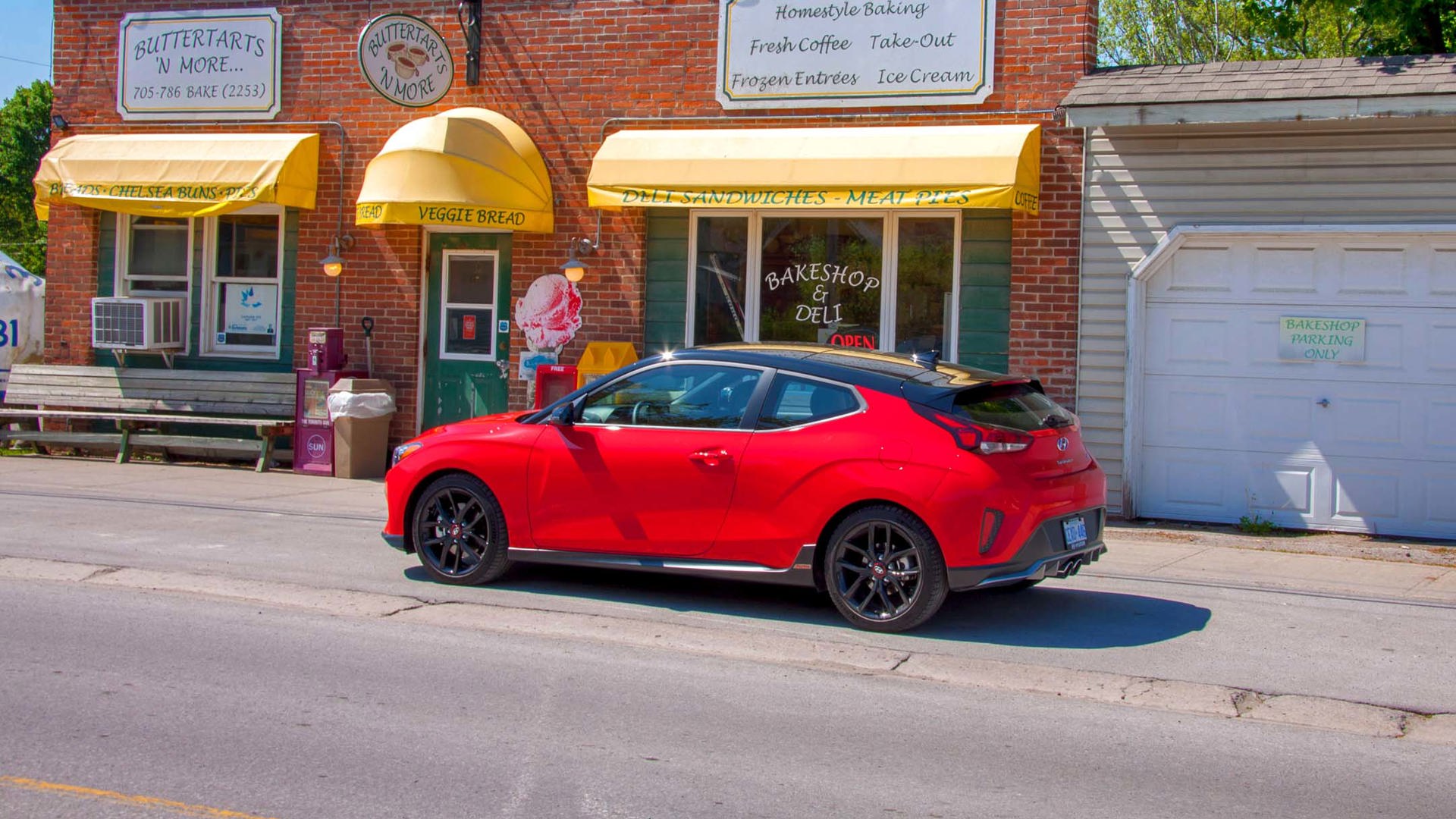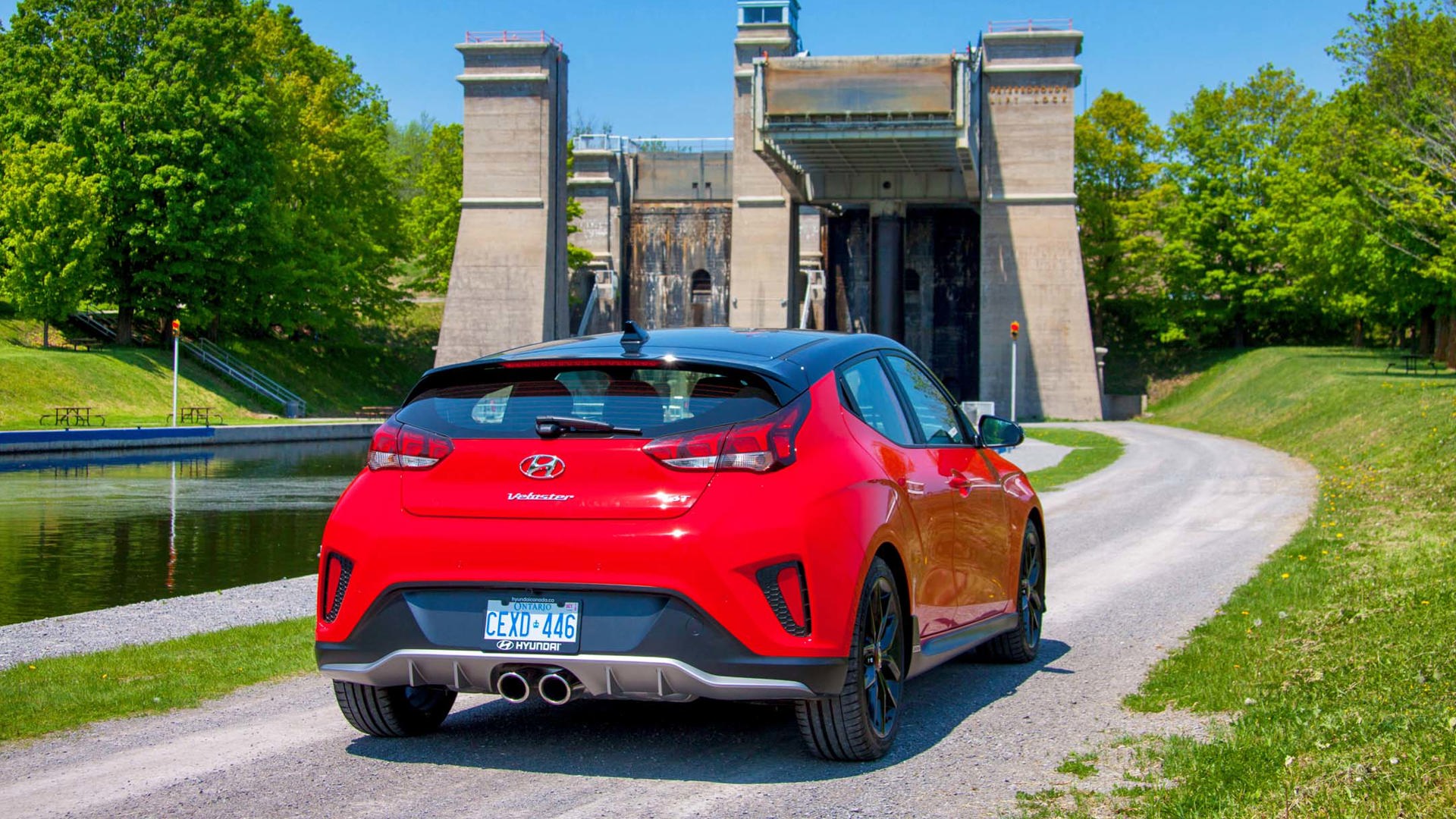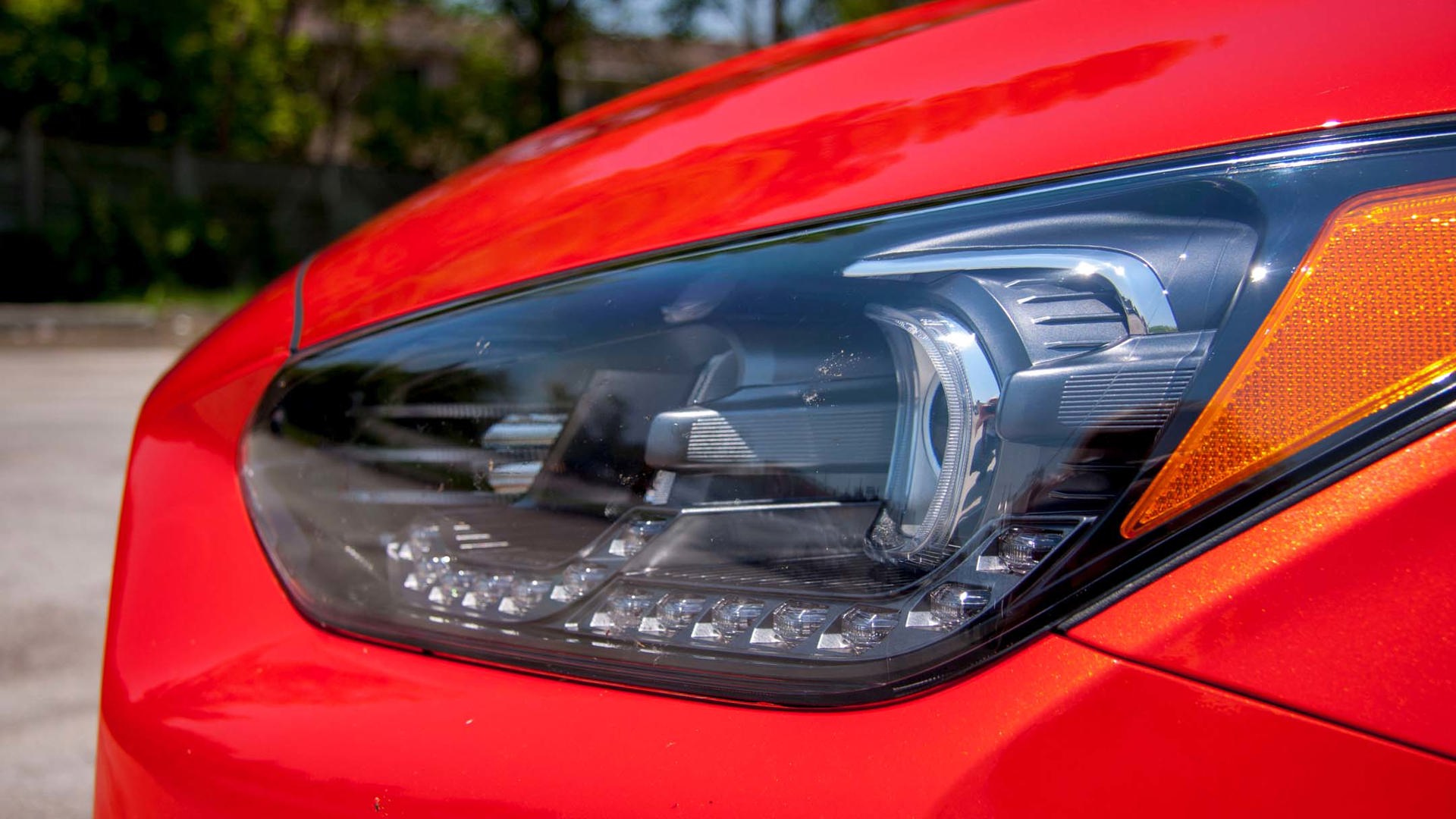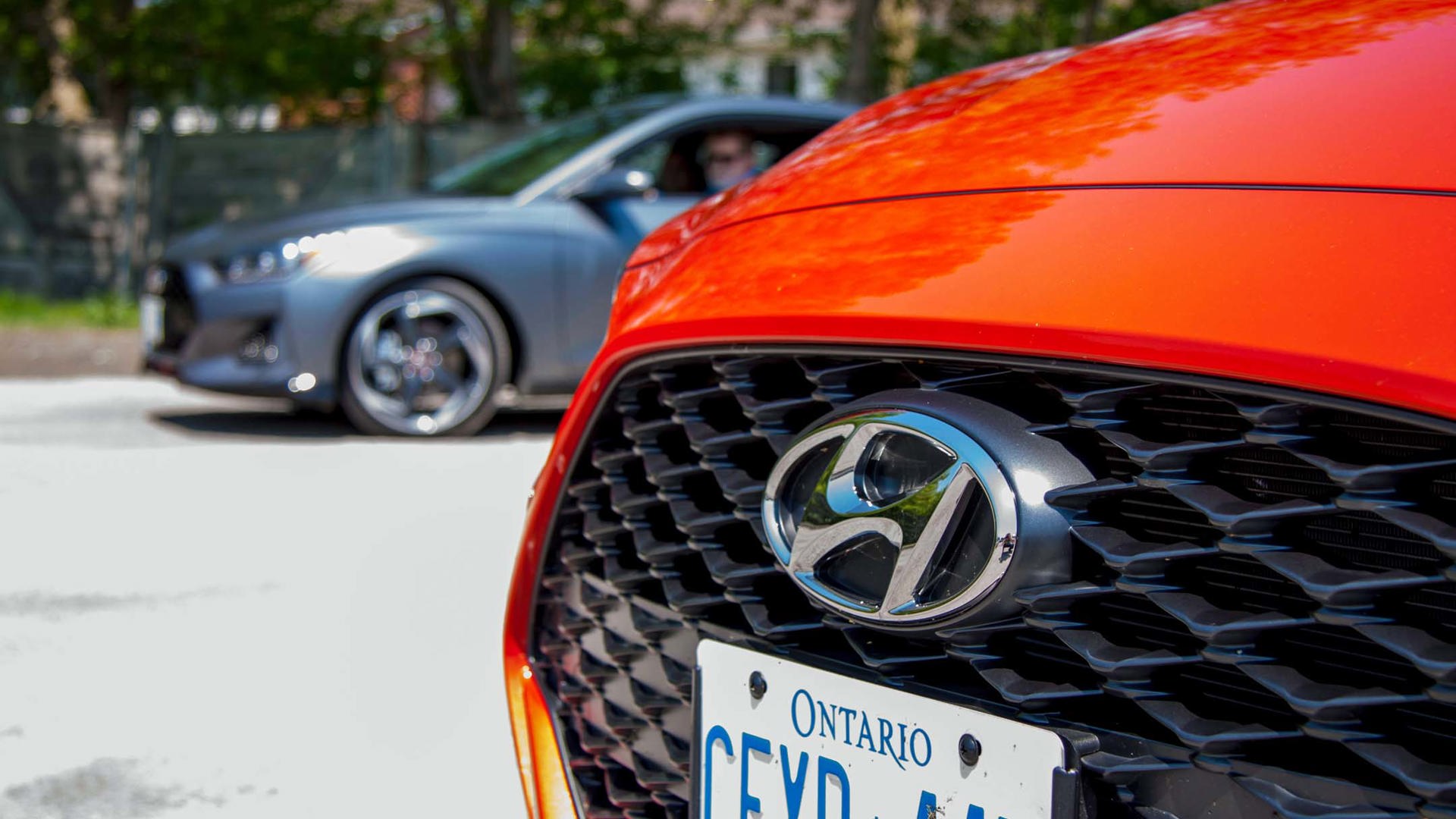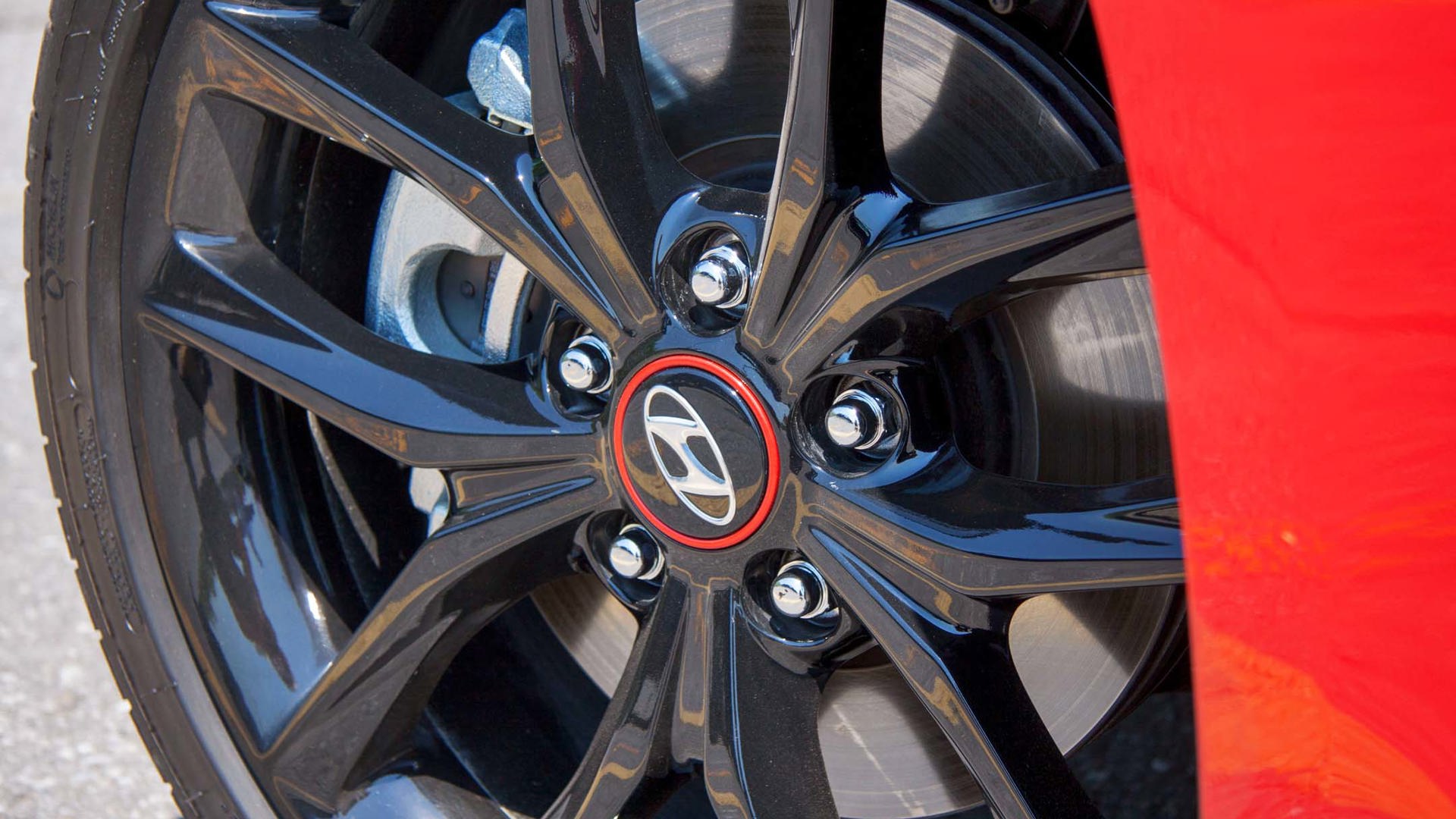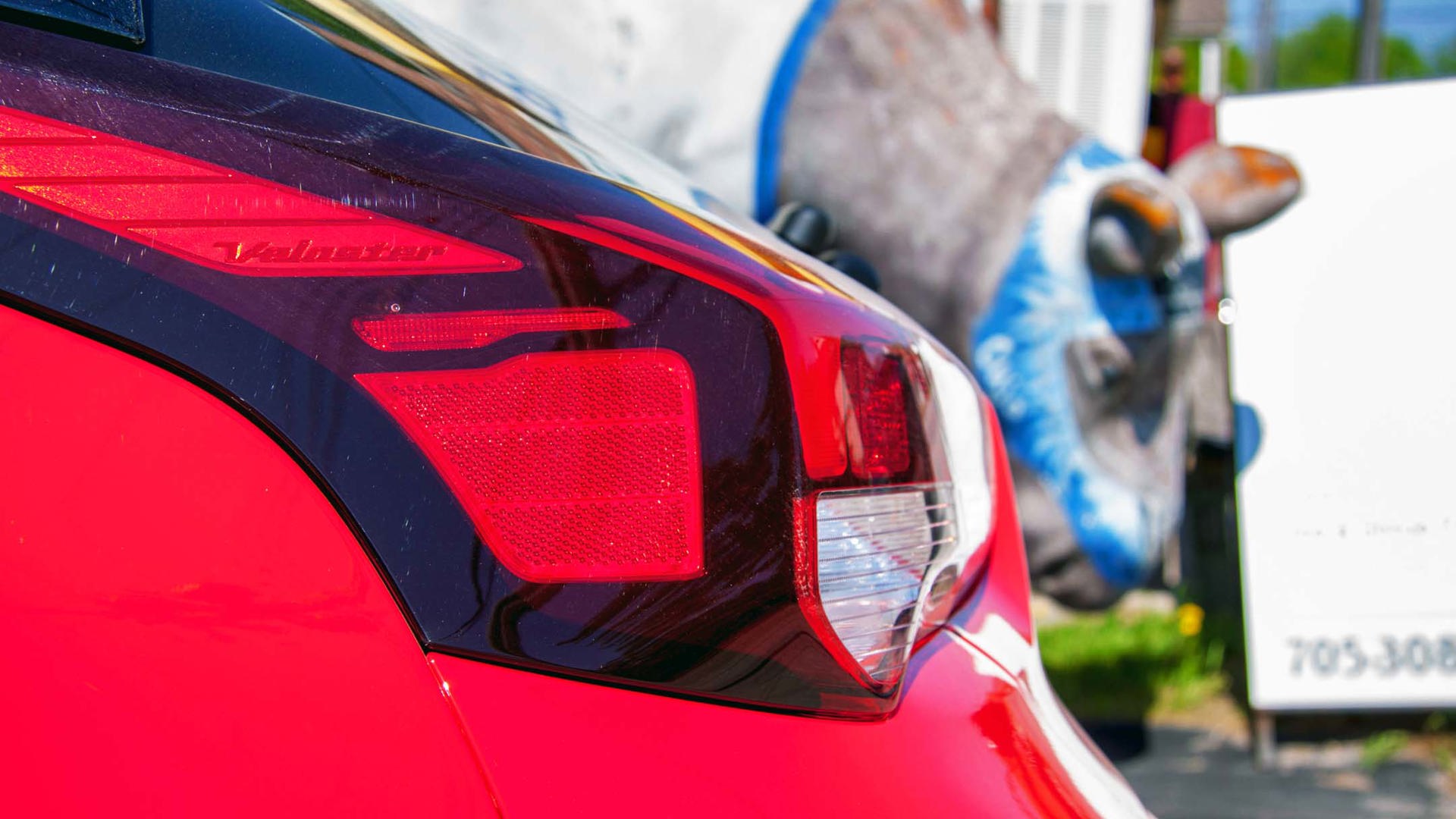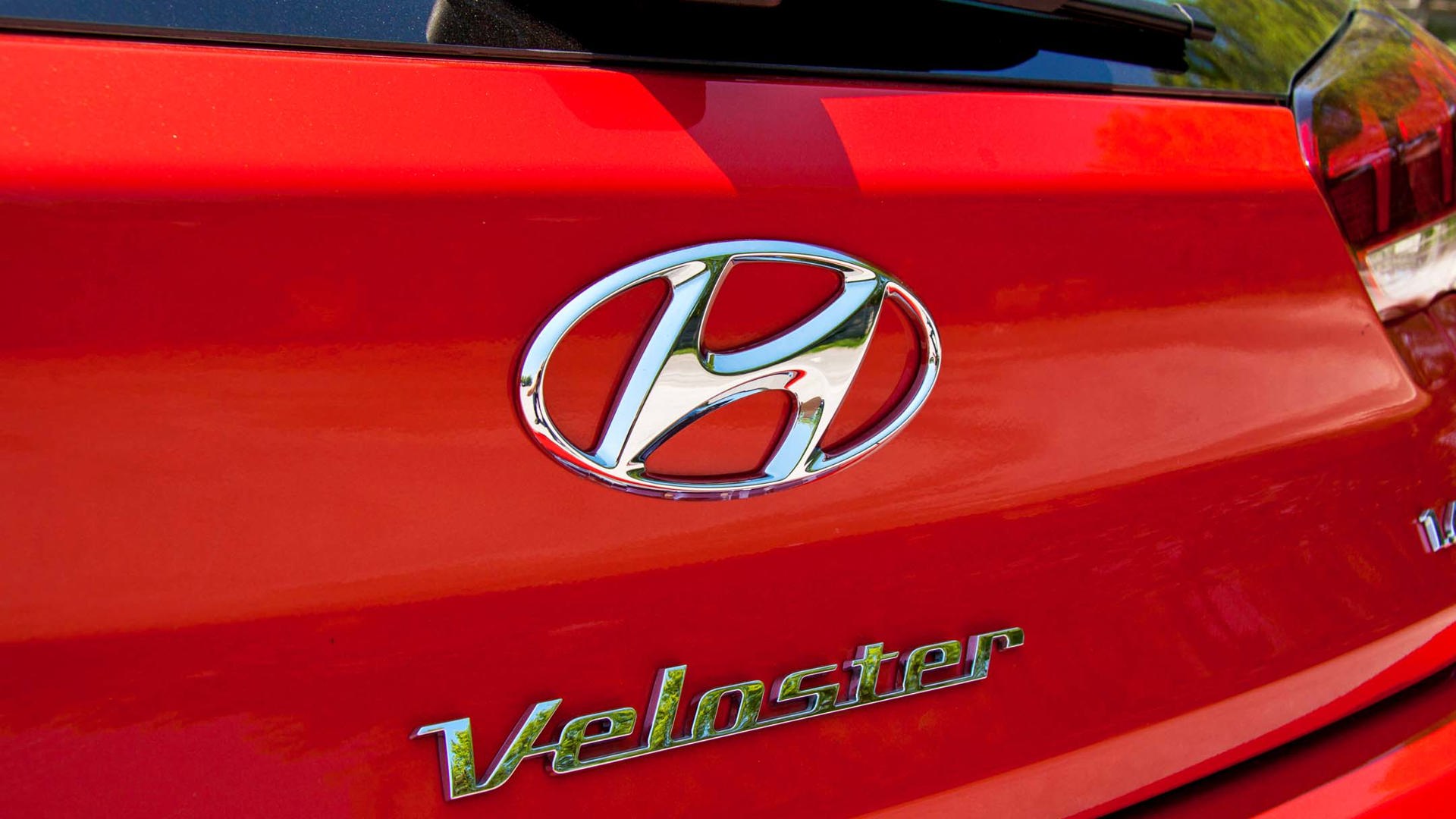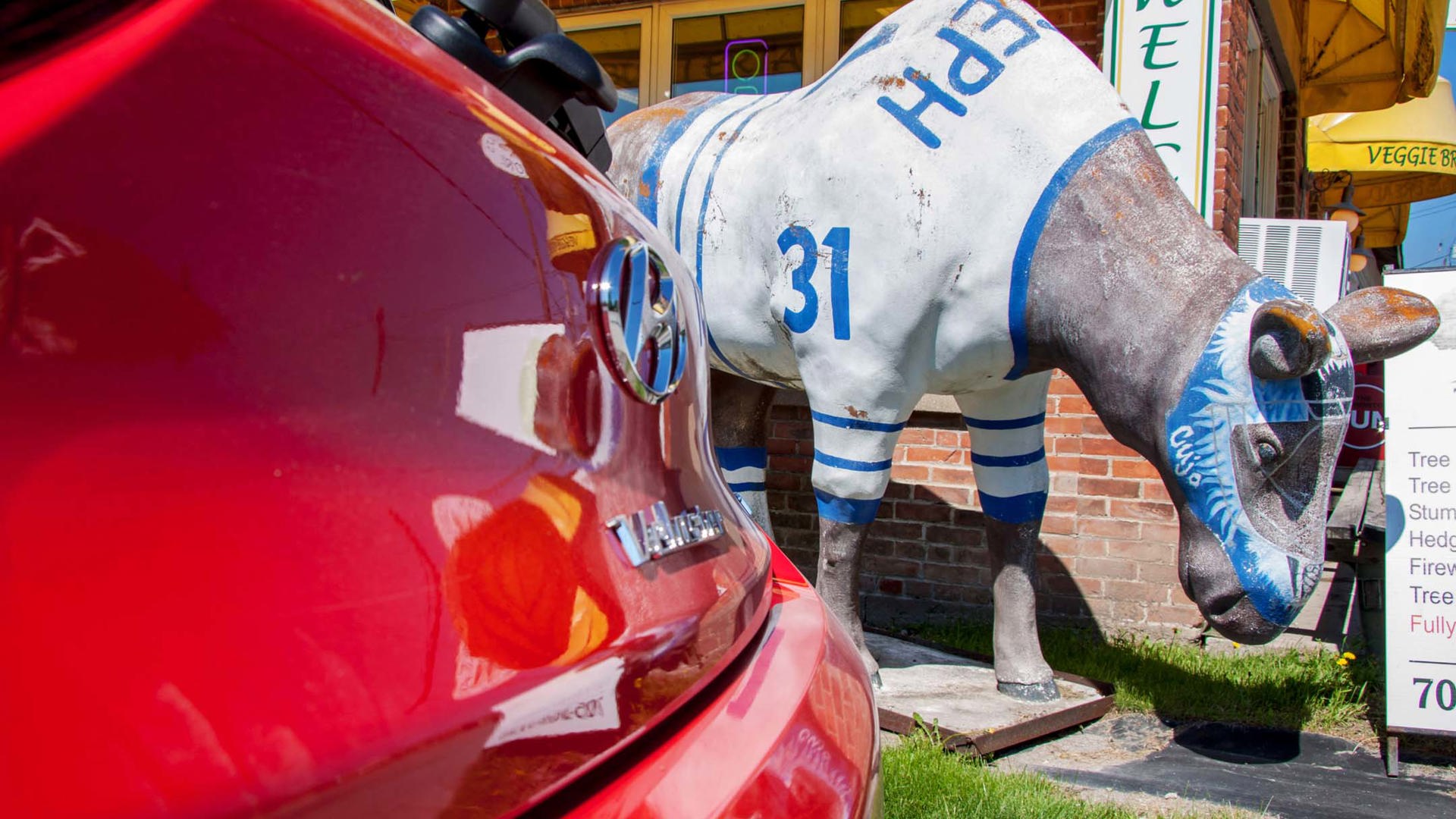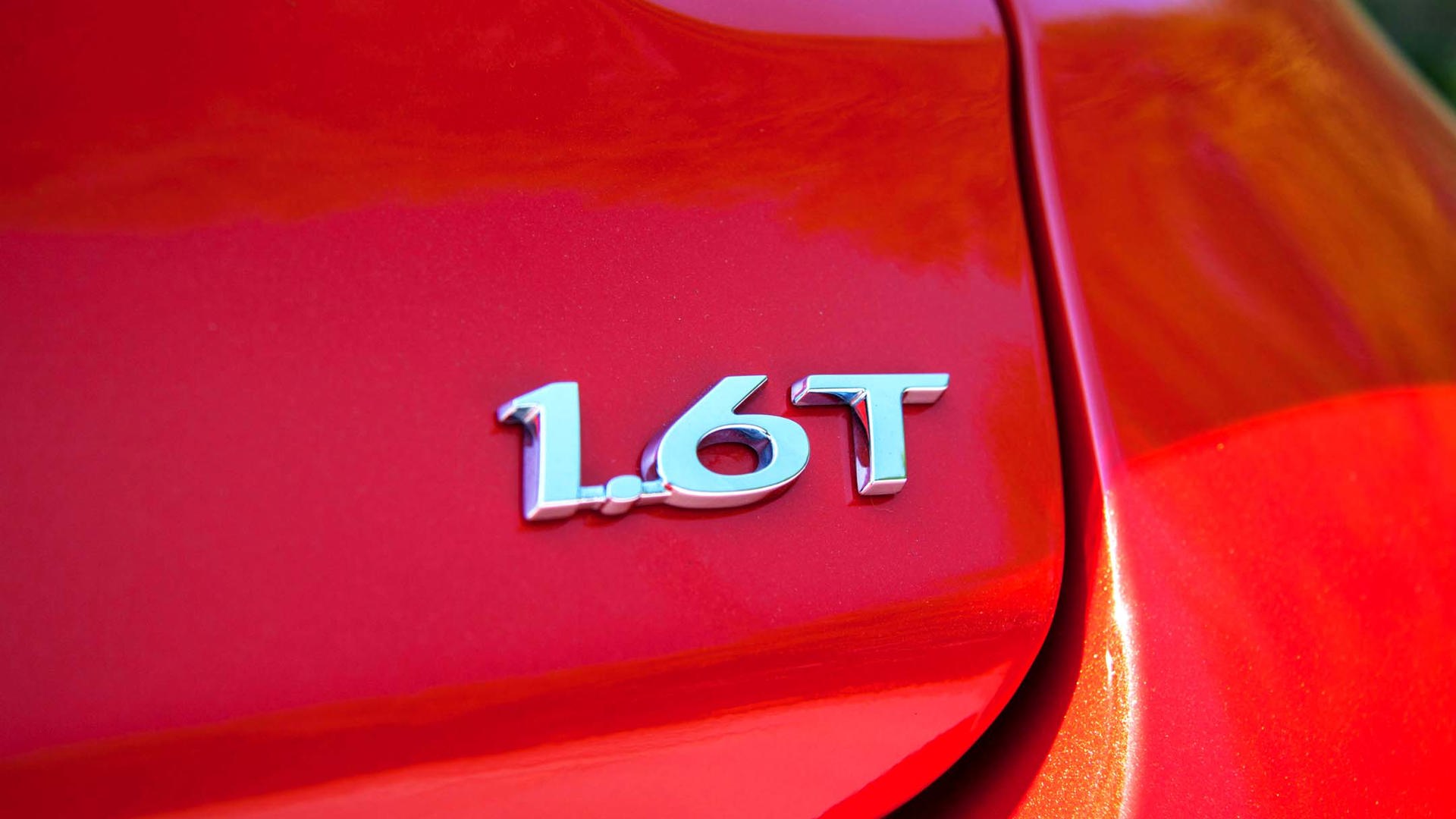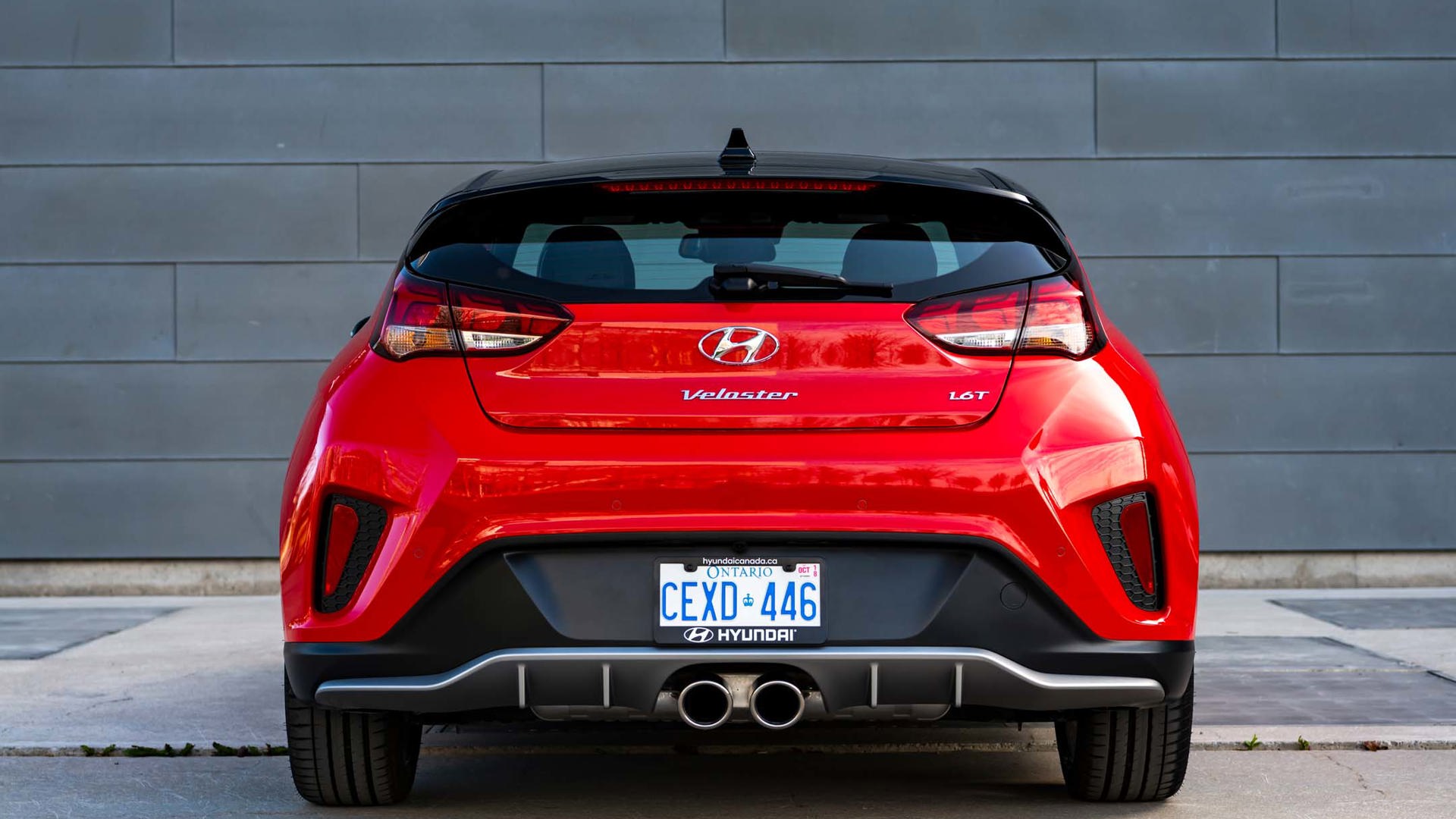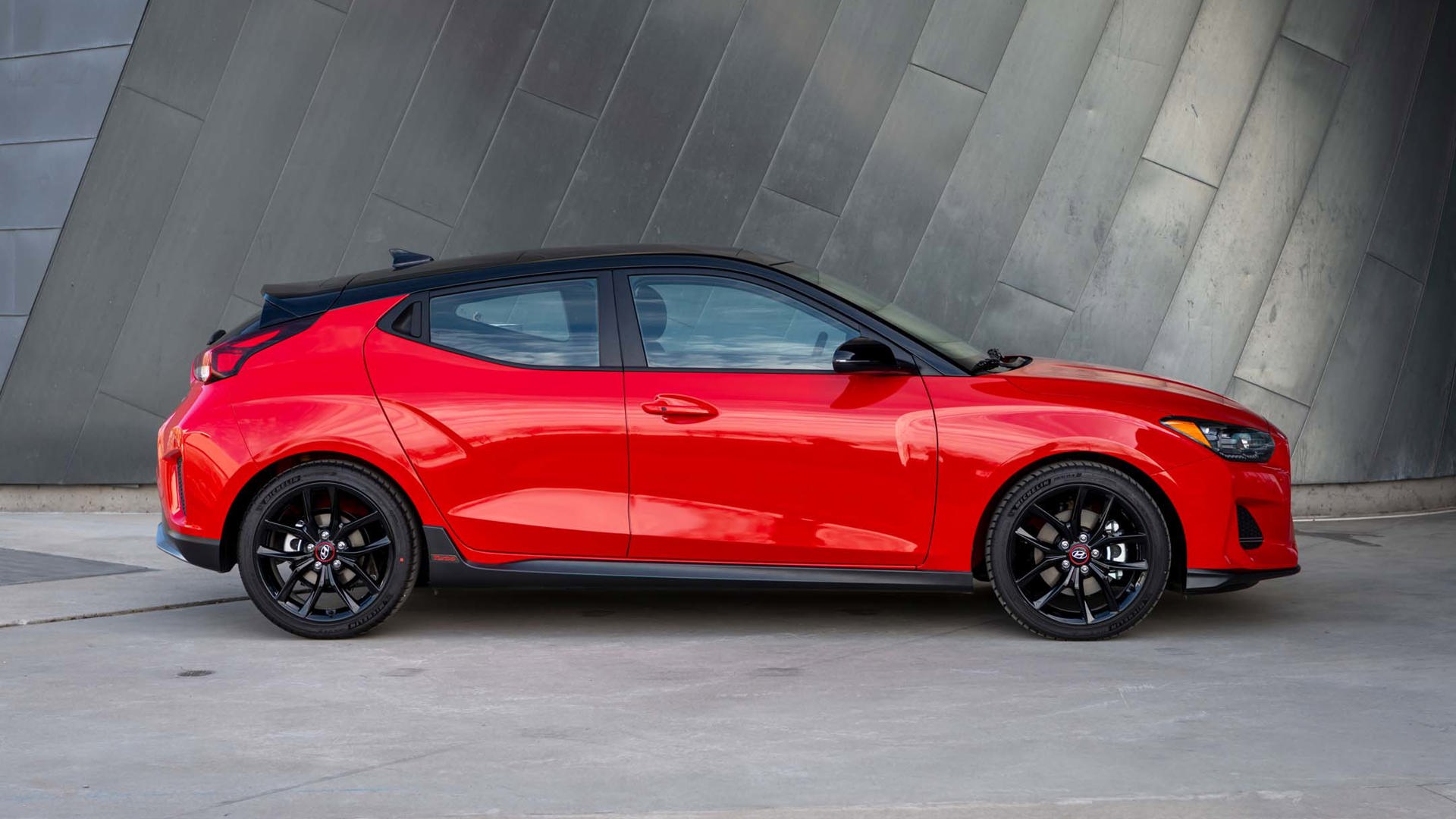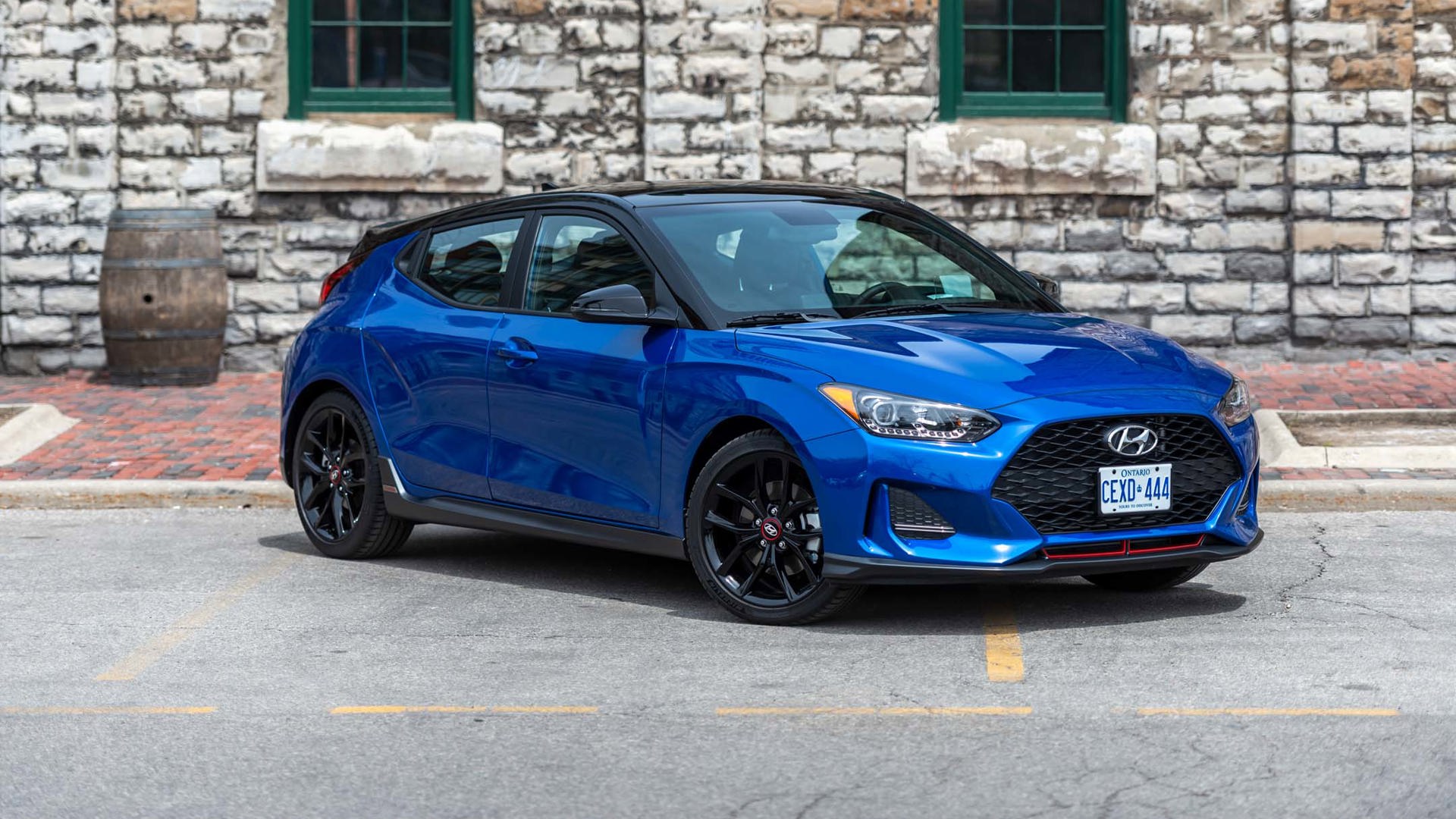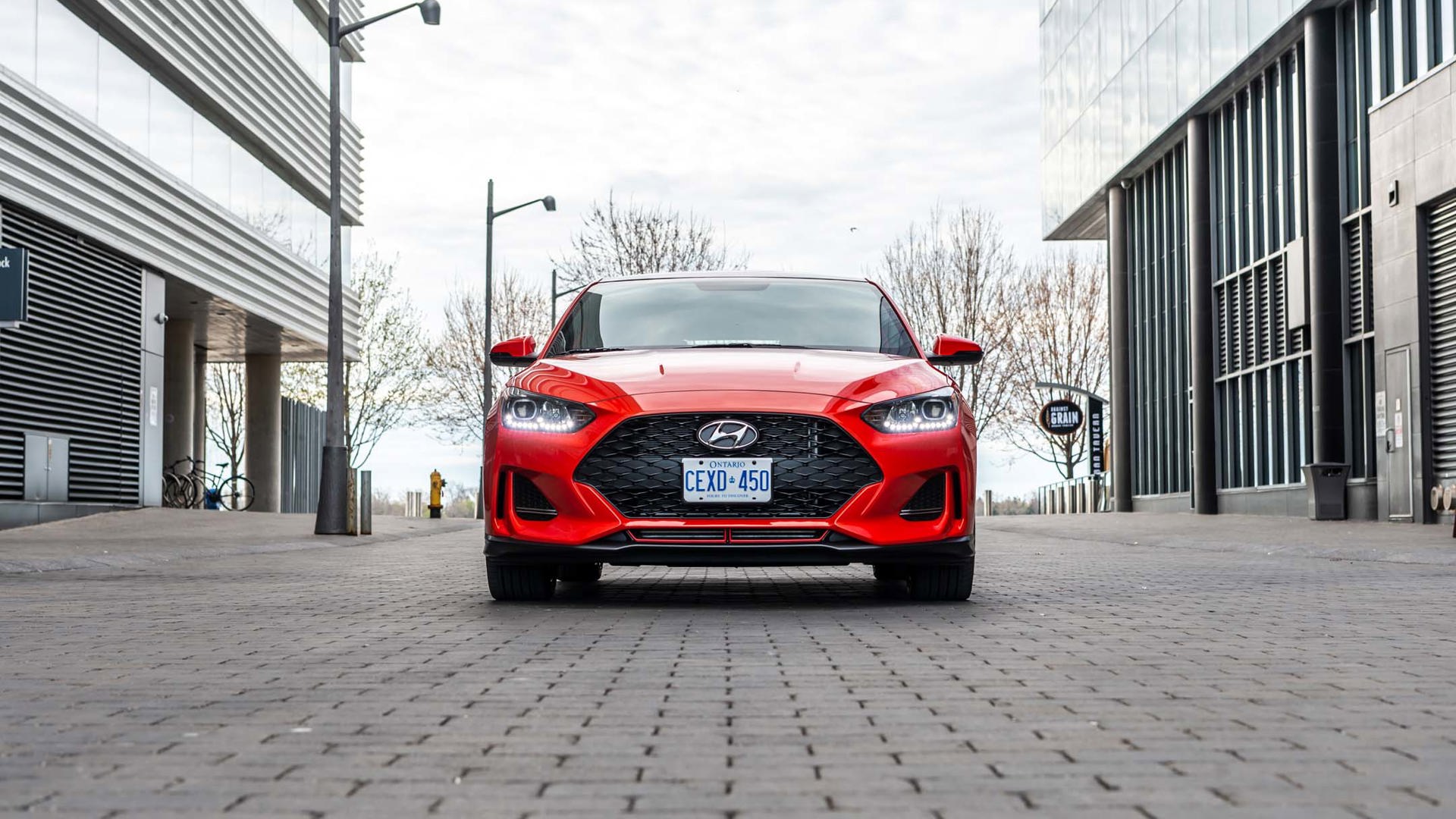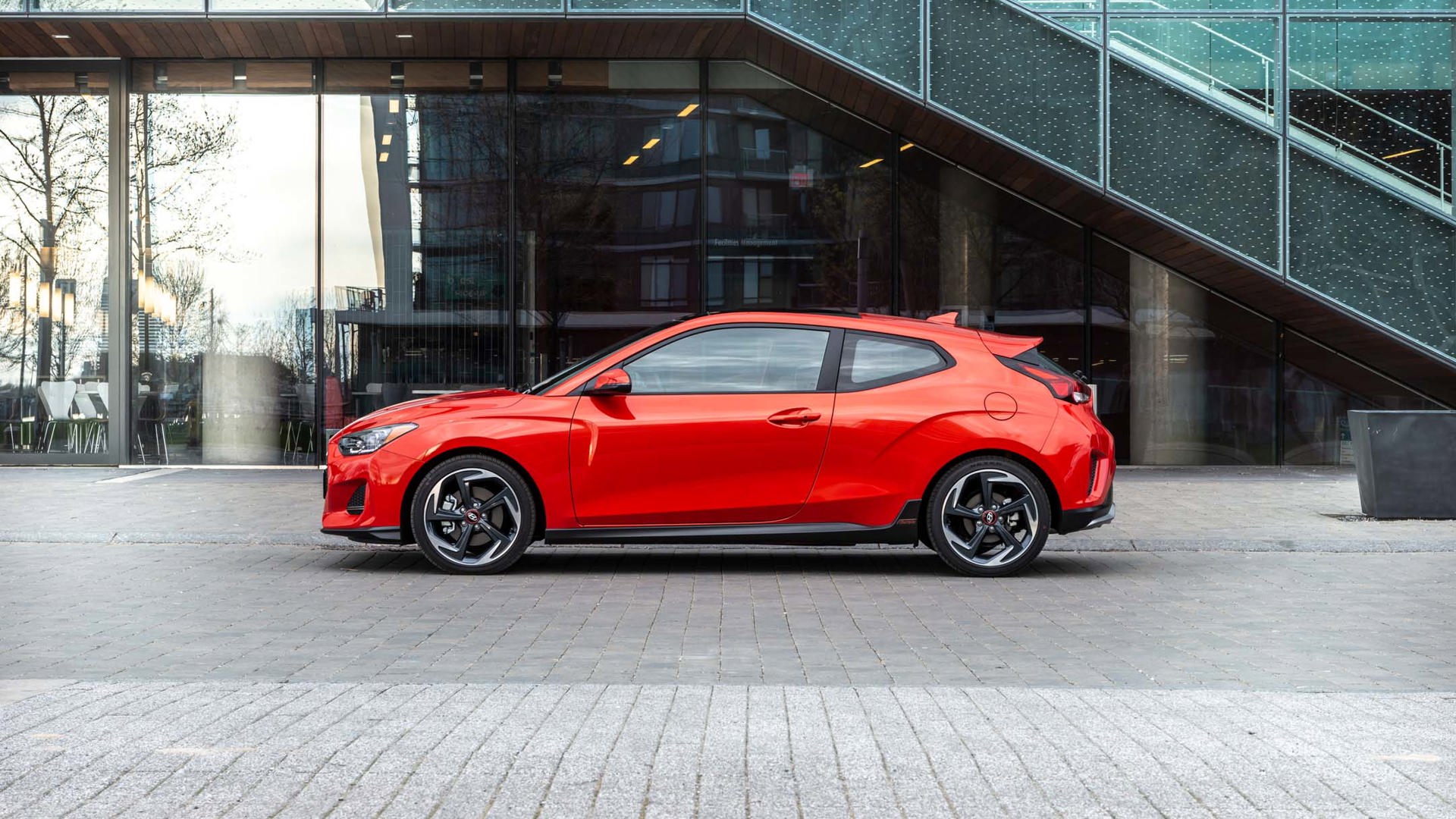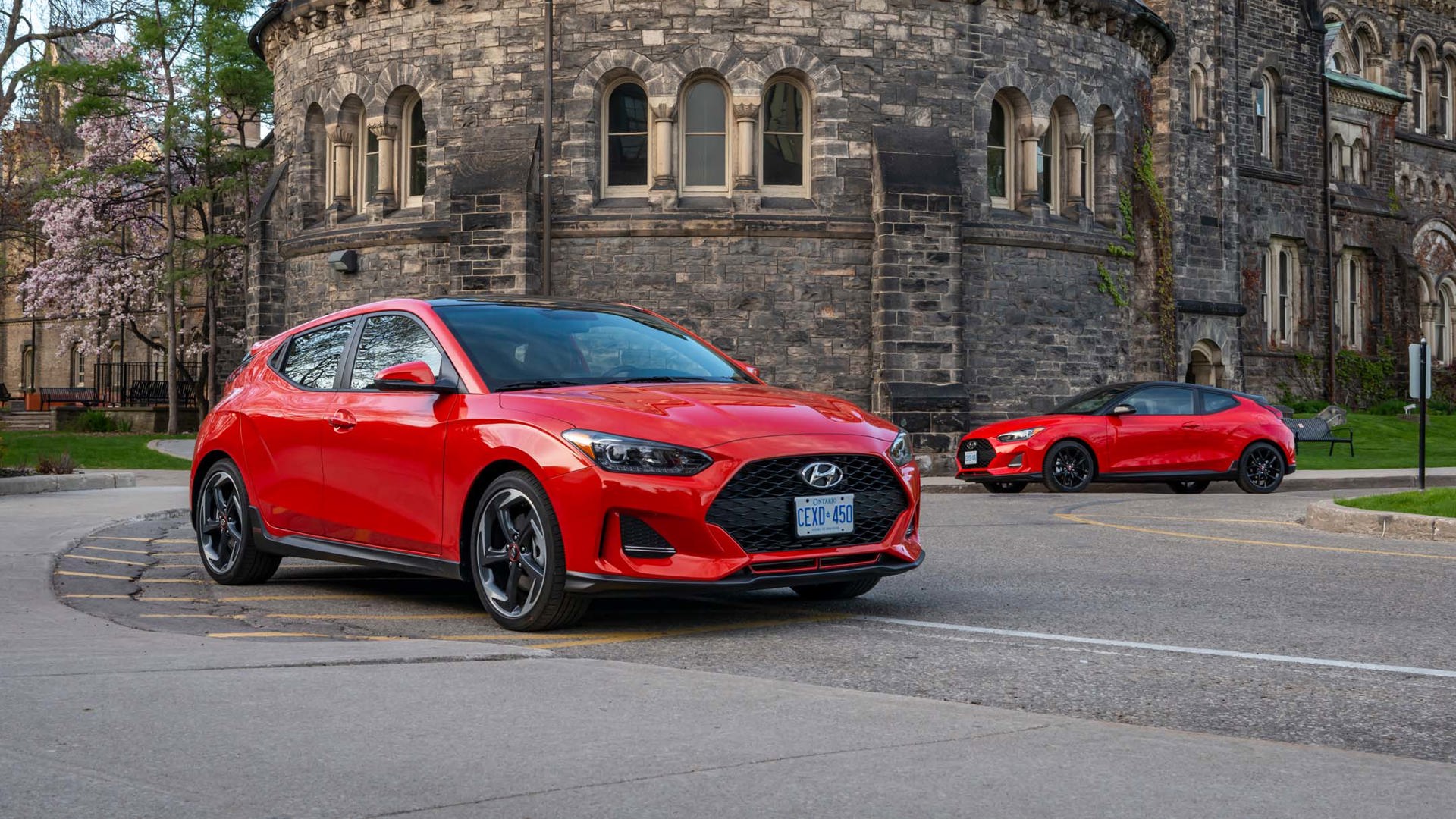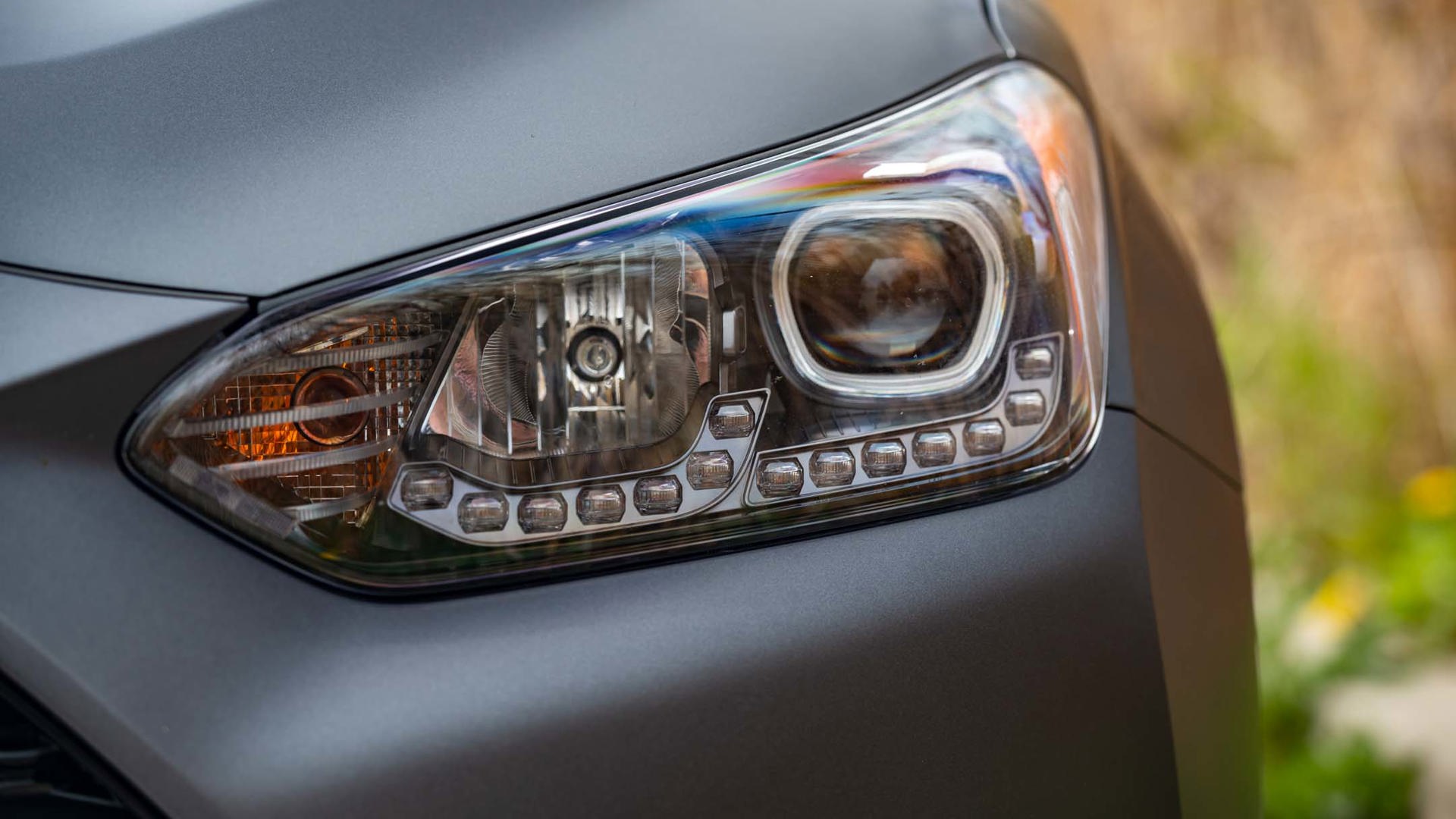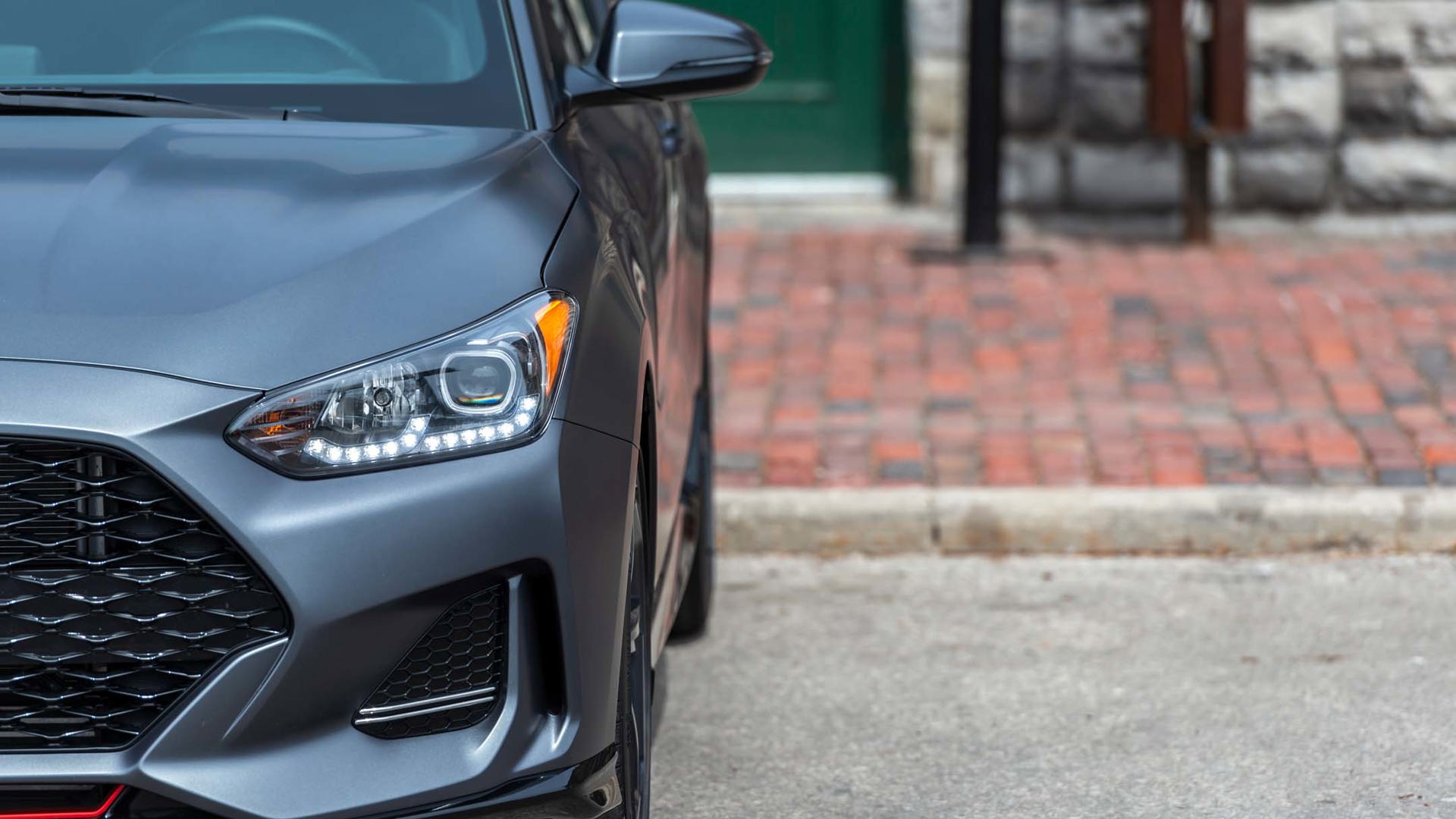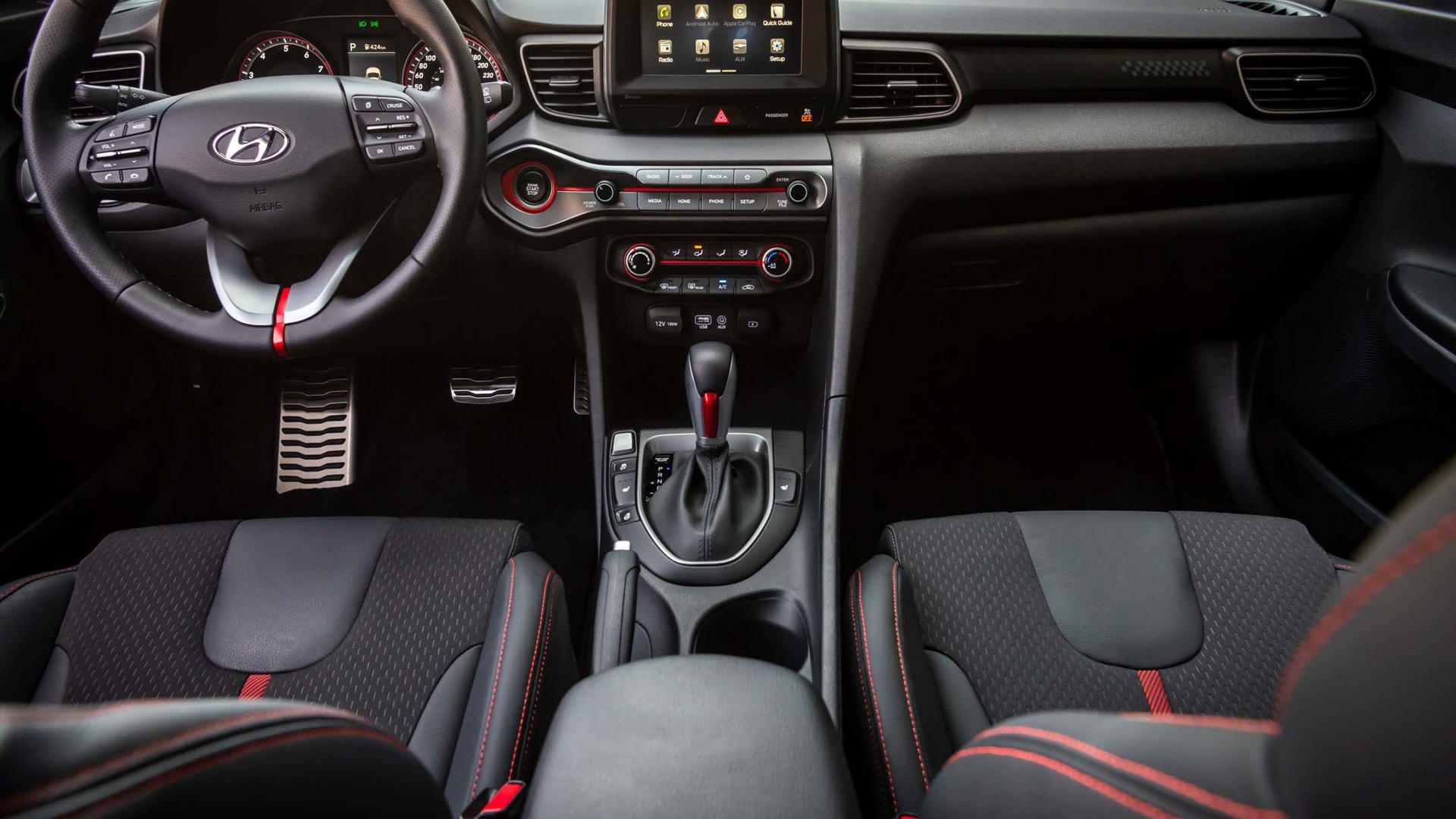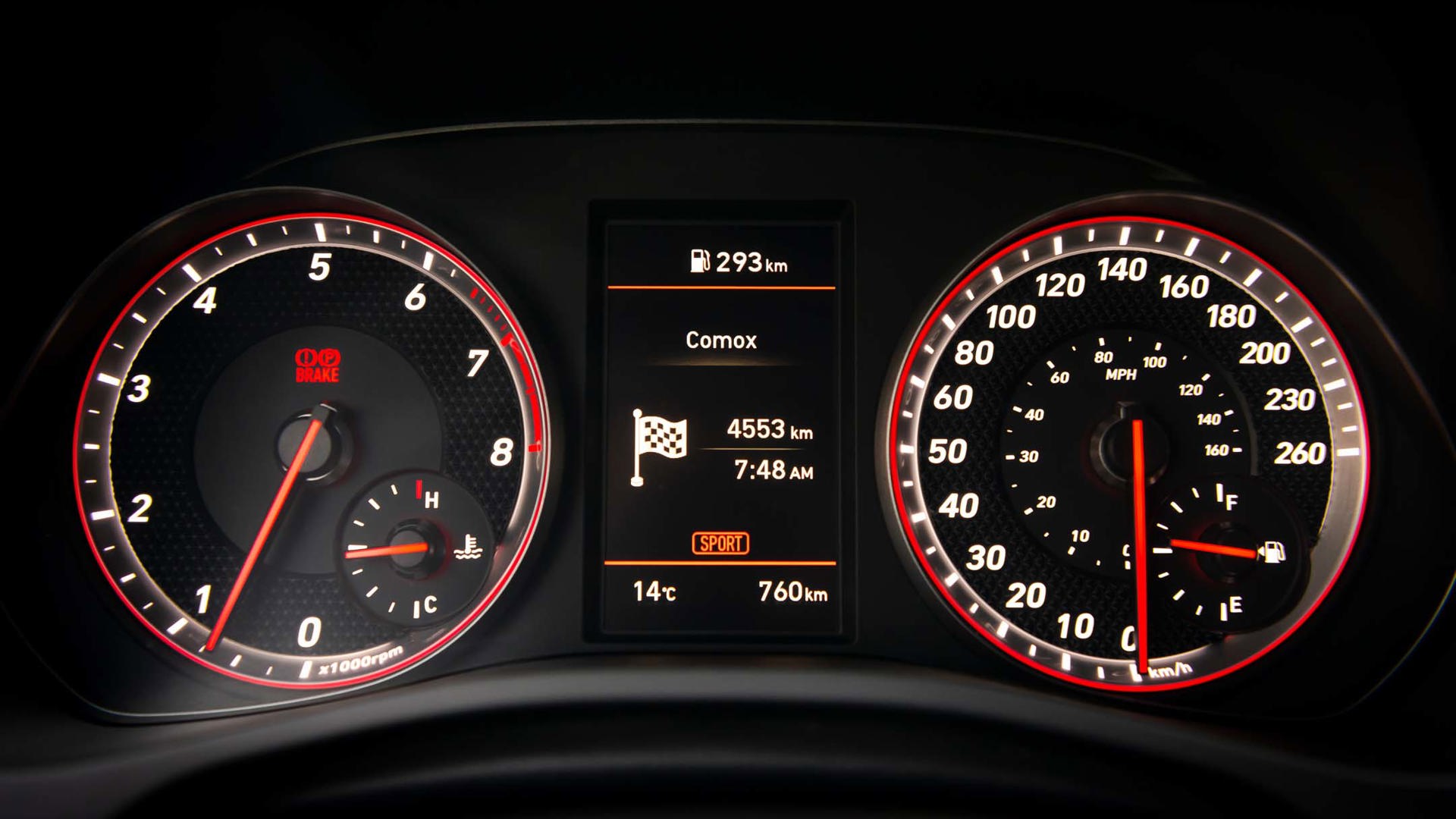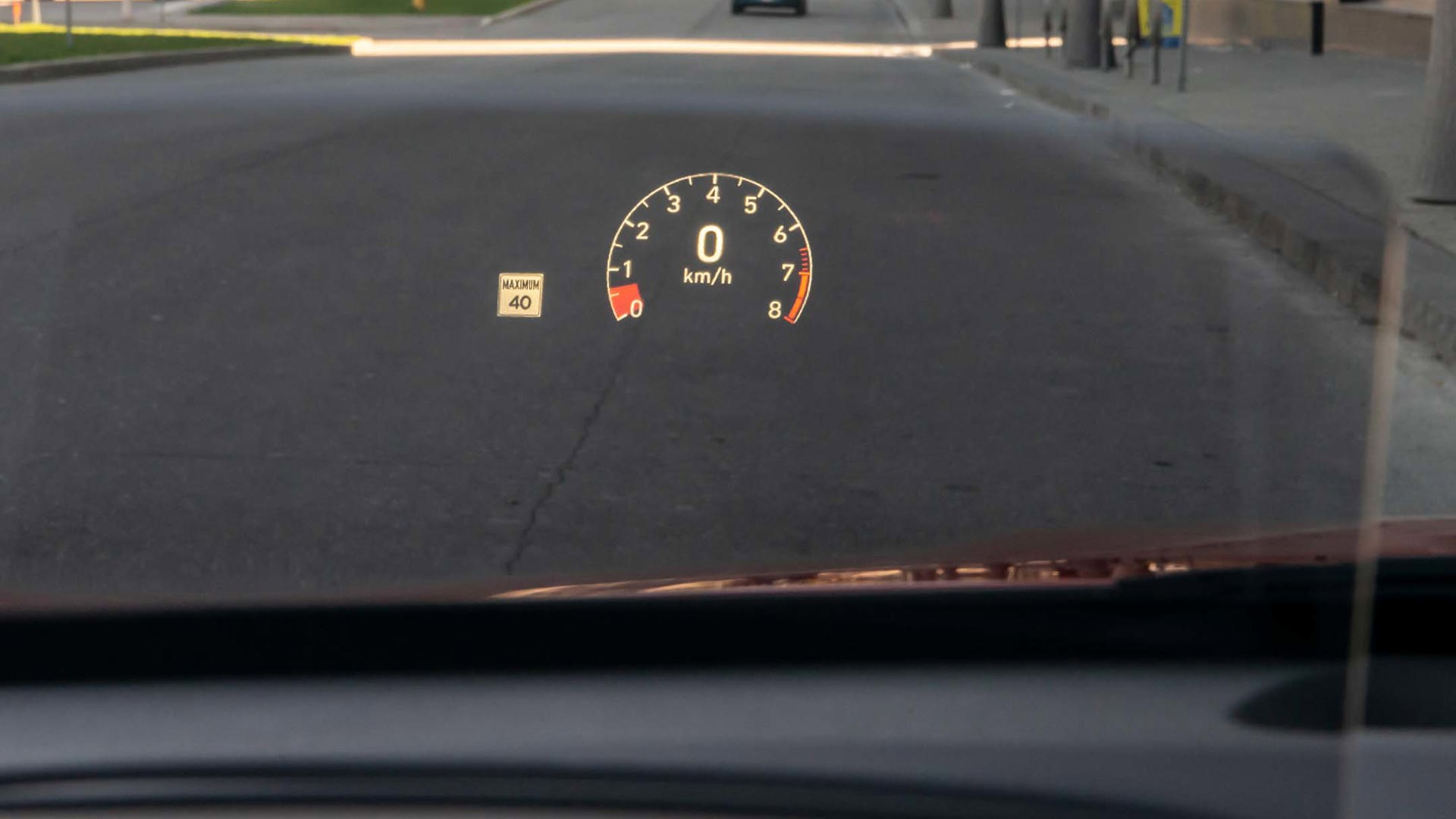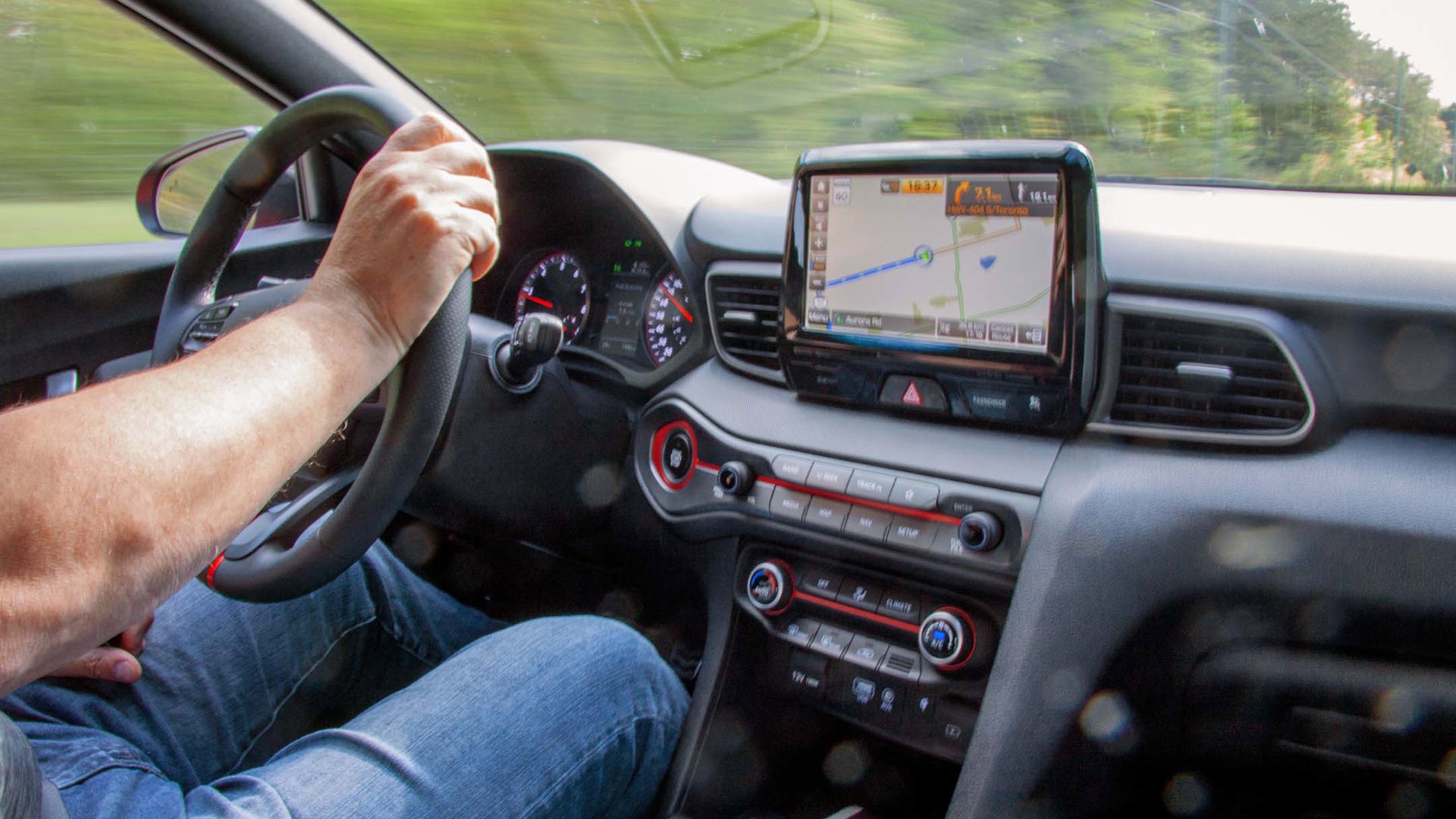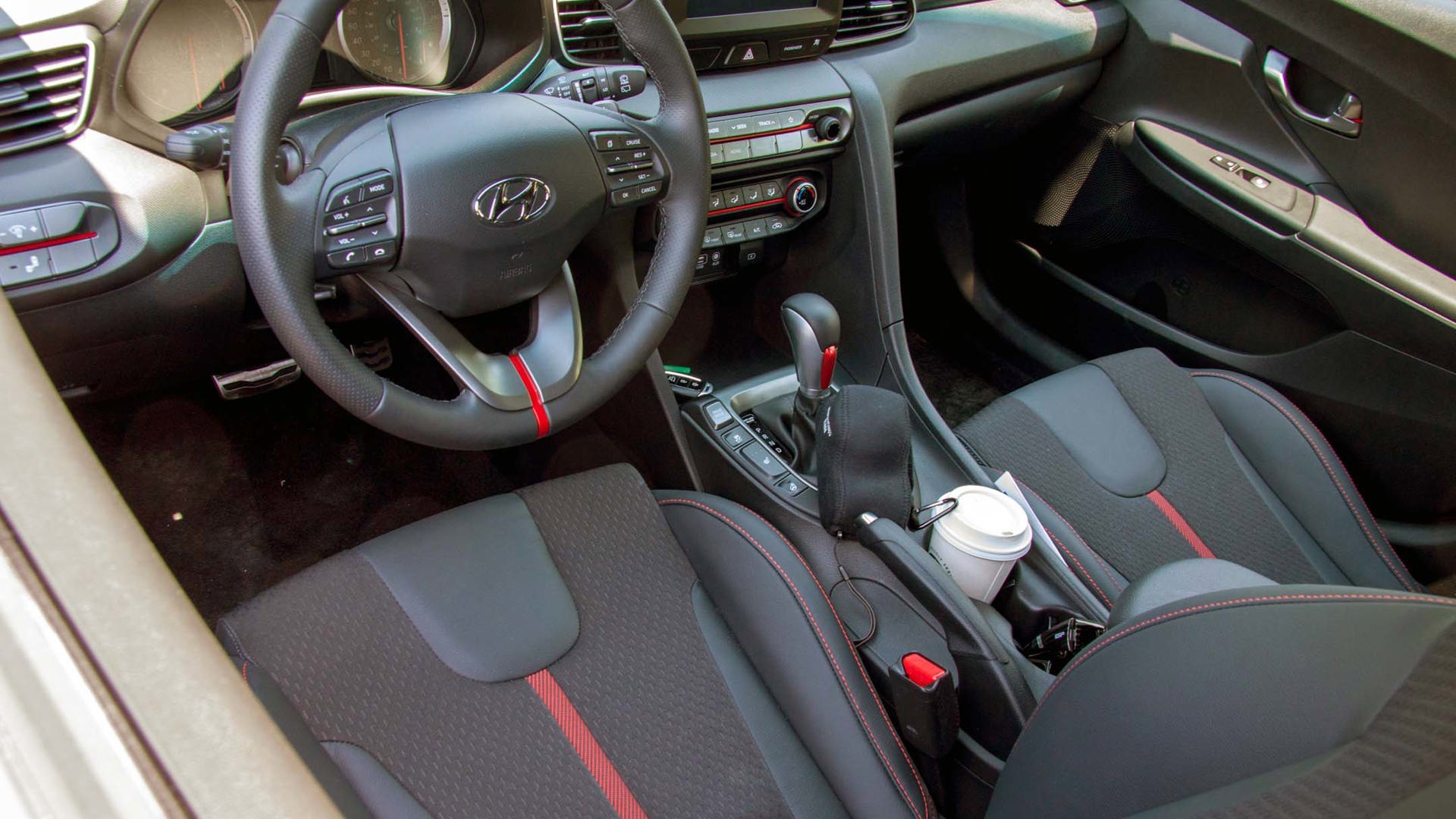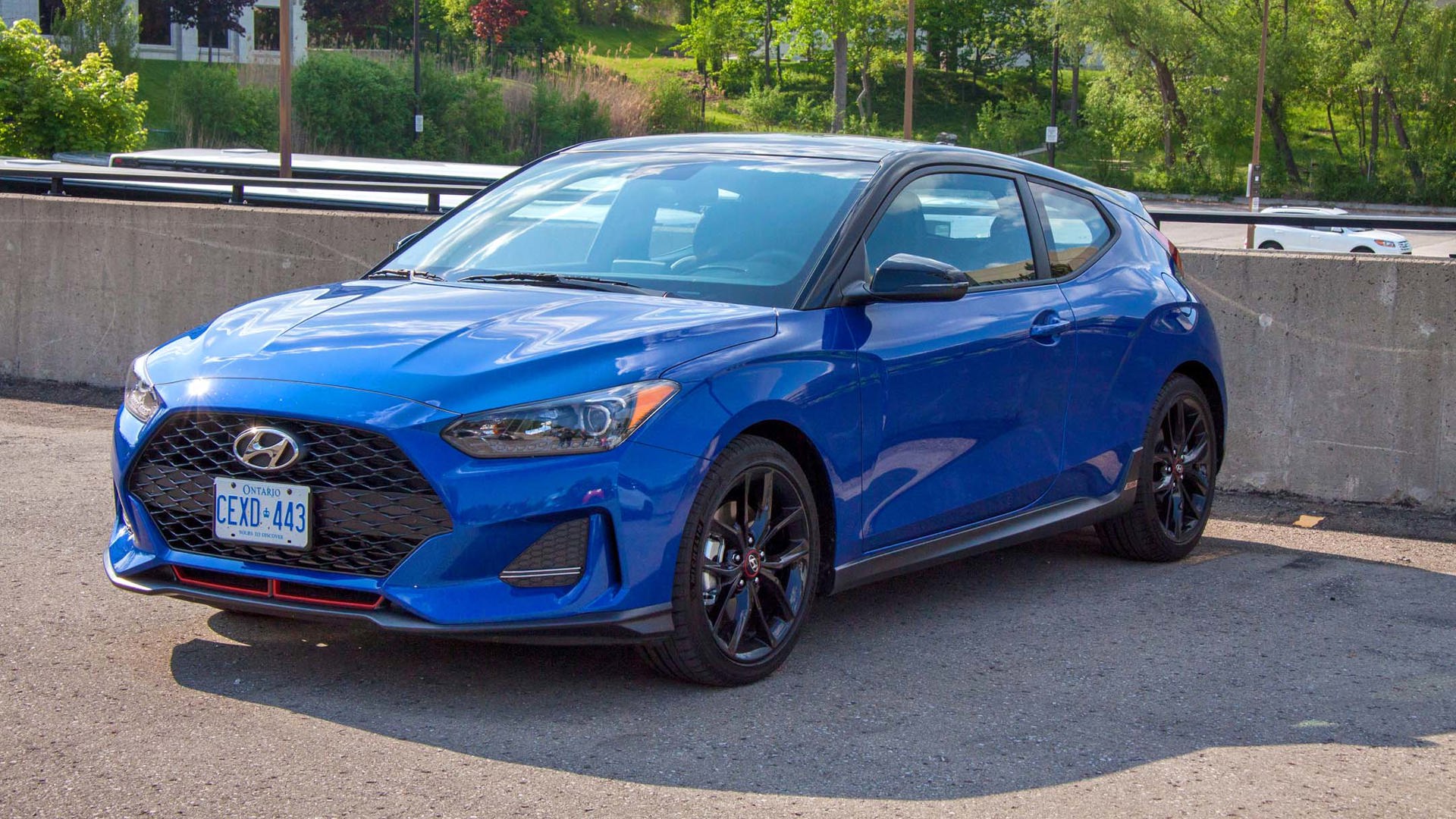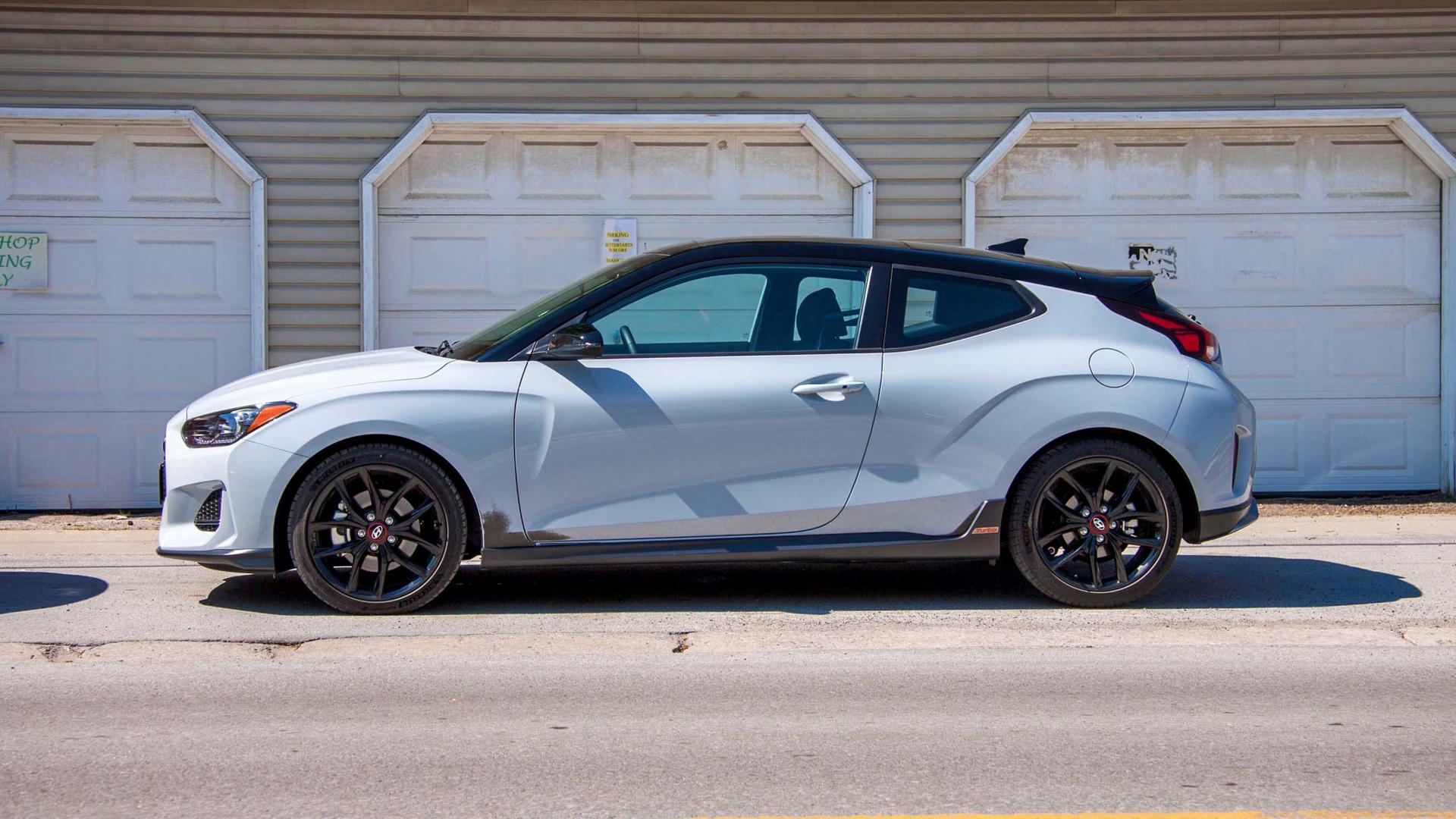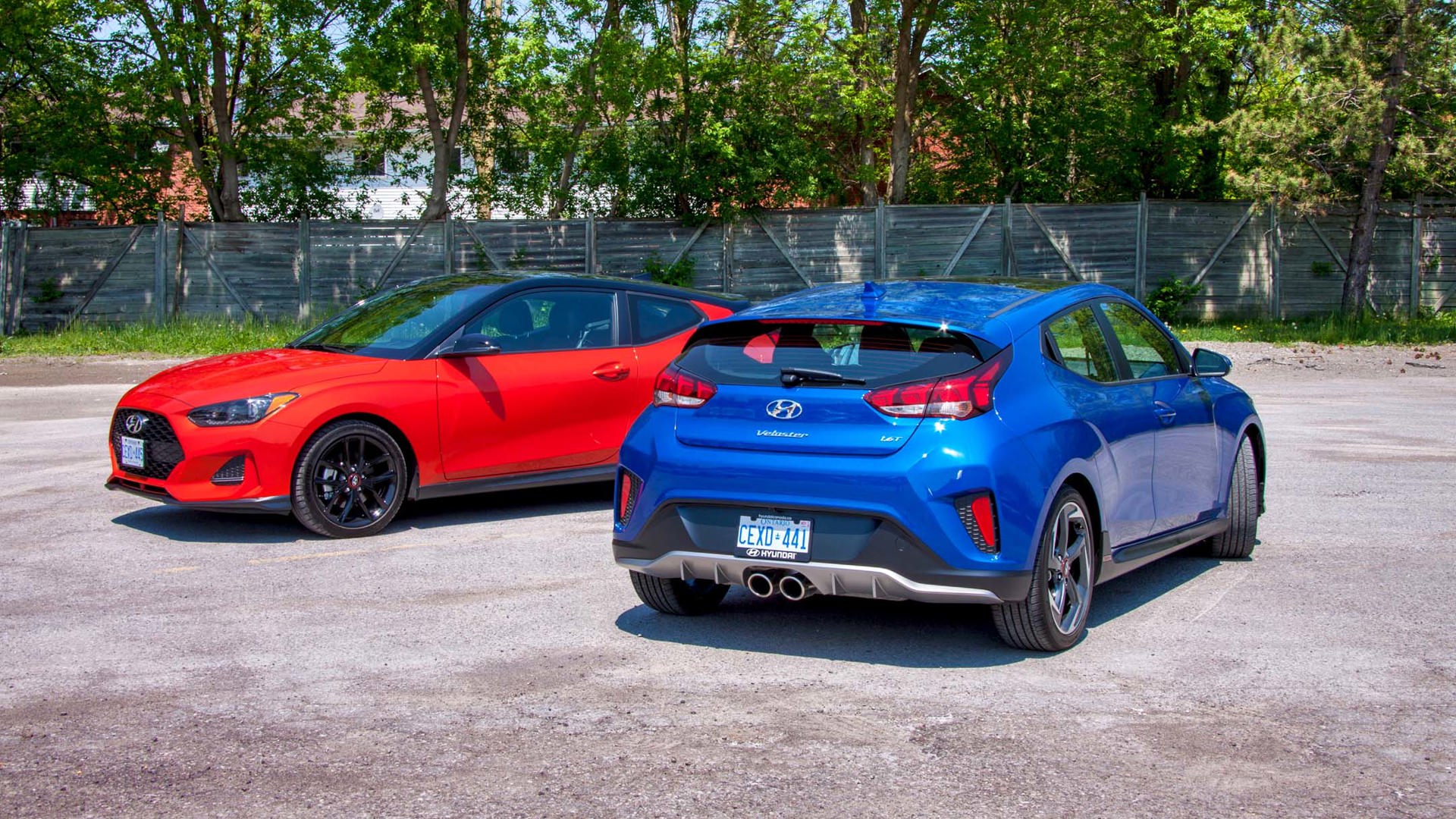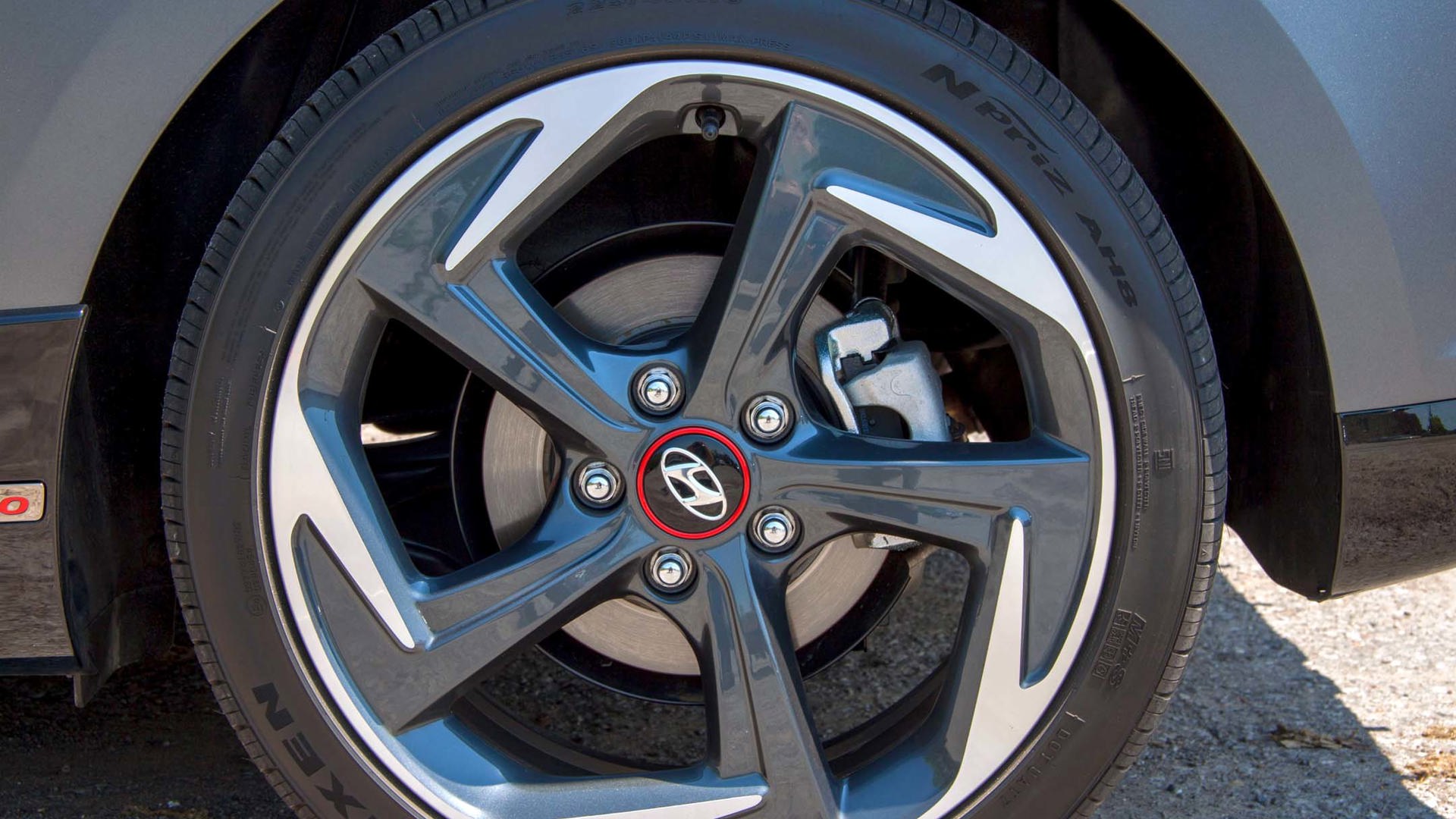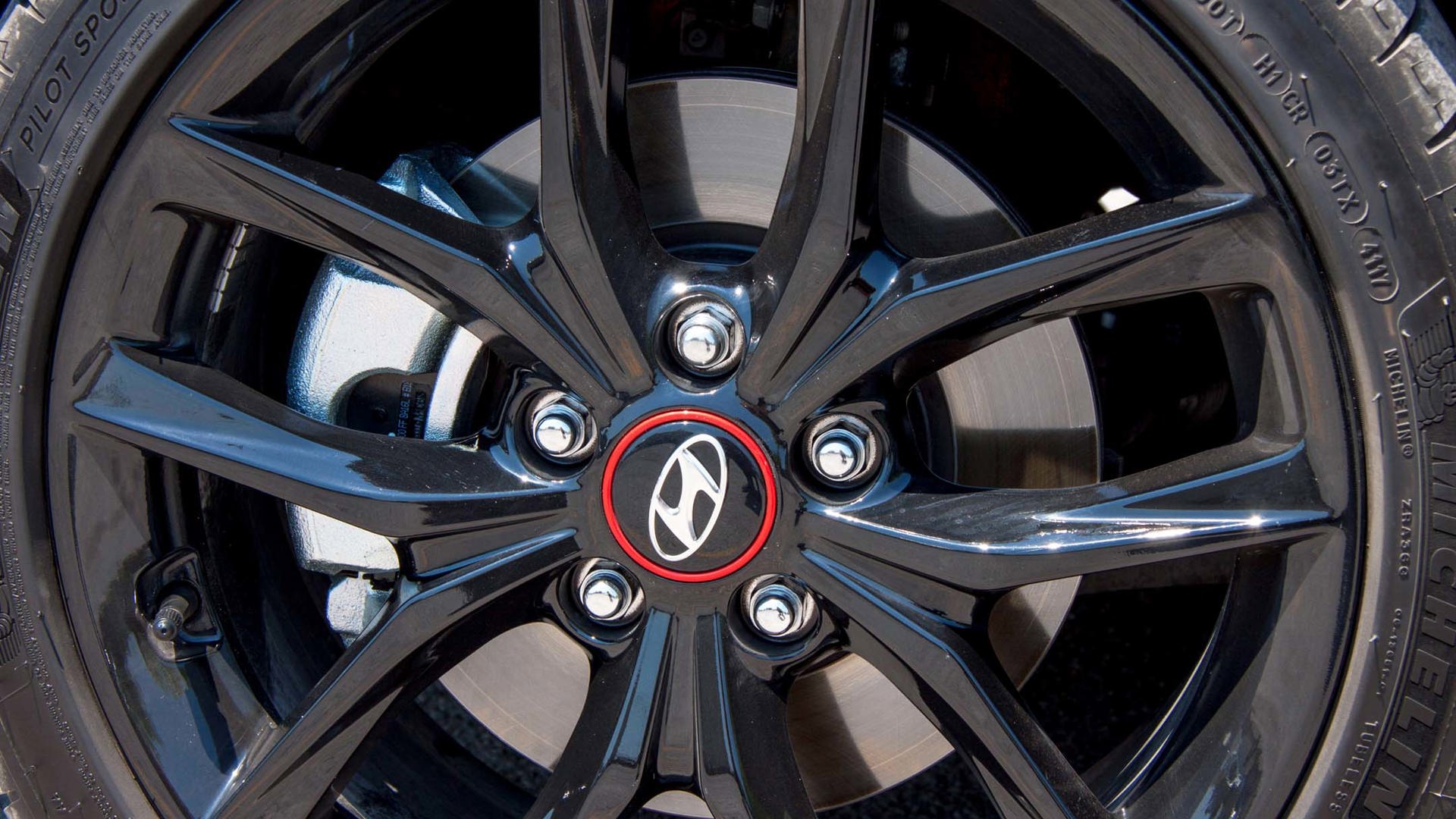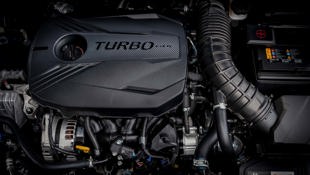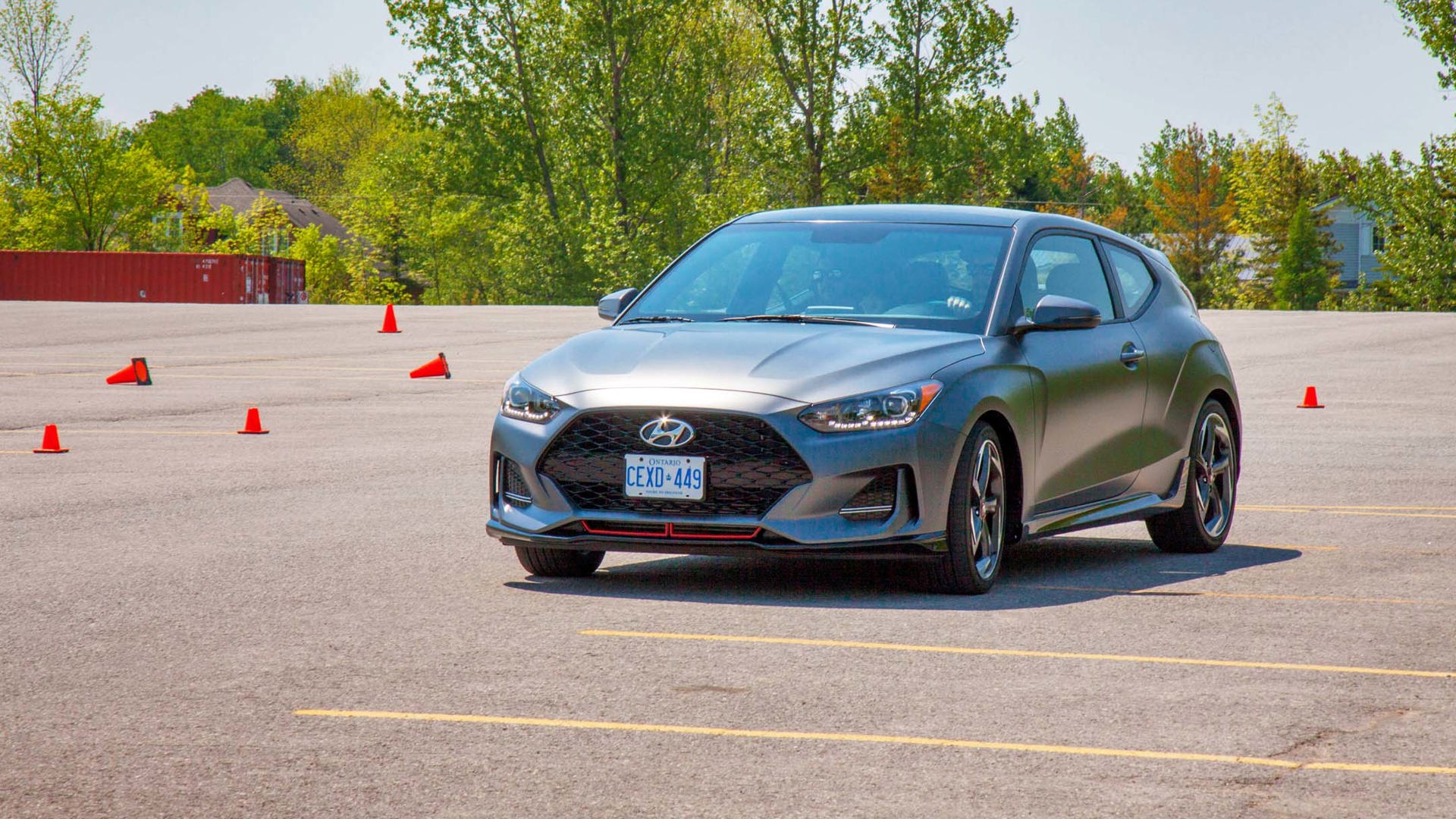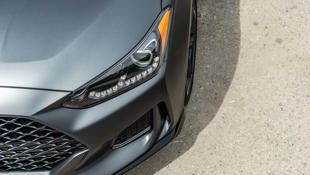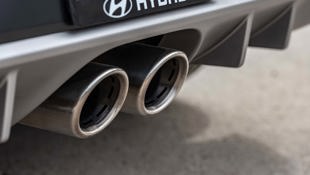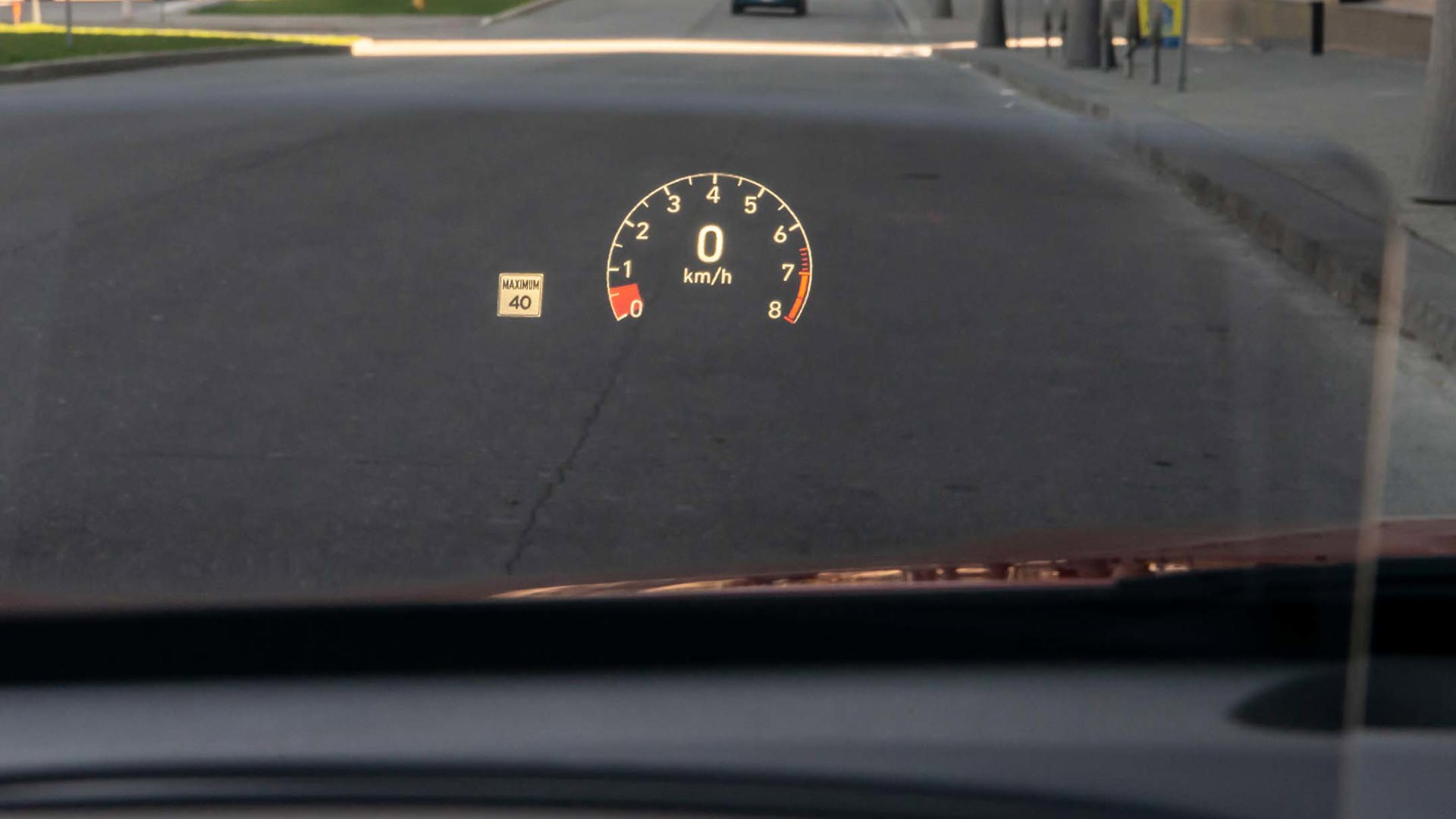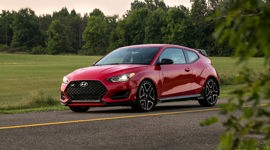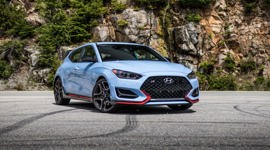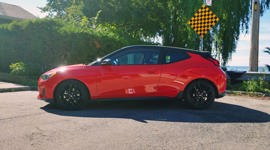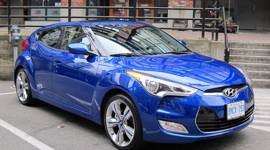KAWARTHA LAKES, ON – There’s an intense subset of compact import fans who revere the obscure and funky – and if the car also happens to perform well, then so much the better. So the 2012 introduction of Hyundai’s asymmetrical little hatchback with a name like an angry pterodactyl (it’s actually a combination of “velocity” and “roadster”) was rather happily anticipated as another welcome addition to the fold.
The new Veloster is the car it was always meant to be.
And it was unequivocally declared a very likeable little car. But “likeable” is the vehicular equivalent of “nice personality” and doesn’t really evoke a lot of passion. The problem was that while we all really “liked” the Veloster, we secretly wanted to love it. And that’s where the disappointment set in. Rather than being a hot, or even a warm hatch, the Veloster was more like an Accent with a Museum of Modern Art makeover. It was cute, it was zippy, but the steering was rubbery, and its twist beam rear suspension left it scrambling through corners.
The Veloster hasn’t been an outstanding sales success for Hyundai, but still manages to remain healthily afloat in a segment whose numbers are dwindling. While passenger cars in general have been usurped by the explosively popular crossover, the compact segment has been less affected compared to the devastation wreaked upon the midsize sedan.
The sports and performance compact remains a “small but very active sub-segment” and Hyundai Product Manager Rafael Bechelli sees the Veloster as “more than just sales figures.” Such cars are important to the brand, as they “project an image of brand styling, and excitement,” and are a portent of what’s to come.
Aggressive, attractive, packed with standard features
The second-generation Veloster arrives for 2019 on the same new platform that underpins the recently released Elantra GT. And anyone who’s driven the sportier version of Hyundai’s popular compact sedan will agree that that is a very good thing indeed. It’s 20 mm longer, and 10 mm wider, giving the new car more interior space and a wider stance.
The Veloster retains its endearingly quirky looks, but they’ve been refined in a more sophisticated interpretation of the original styling. The roof is faster, and more raked; LED head and taillights are wider and tapered into an upscale, jewel-like setting. Large, functional air inlets and the wide, blacked-out grille give the front fascia an aggressive, purposeful look; and the blunt little rump on turbo models is finished off with an impressive rear diffuser with dual centre exhaust tips. Muscular shoulders and haunches are now filled with standard 18-inch wheels.
The interior also receives a do-over, with more headroom and cargo space, a driver-focussed cockpit with bolstered sport bucket seats, available leather, and an updated list of standard and available technology. It’s an attractive space, particularly in the two-toned upper trim levels, but there are still plenty of hard plastics reflecting its budget origins.
As before, there’s the characteristic single rear door making it easier to access the rear seats, but even with their improved headroom you wouldn’t want to spend much time back there. However, the Veloster now boasts 565 L of trunk space behind the rear seats – more than the Civic Coupe, the Mini Cooper, or Volkswagen Beetle, and surprisingly more than some compact crossovers such as the Toyota CH-R, Chevrolet Trax, Jeep Renegade – and even Hyundai’s own Kona. Rear visibility, thanks to the shallow rear window and obtrusive headrests, remains poor. Fortunately, back-up cameras are standard.
The stitched-cloth and leatherette seats offer plenty of support, and come with standard heat. The steering wheel is heated too – in fact all Veloster come with a standard set of features that include 7.0-inch infotainment with Bluetooth, Apple CarPlay, Android Auto, rear-view camera, cruise control, and blind-spot warning with rear cross-traffic alert, lane-change assist.
Veloster Turbo Tech models also get a head-up display; 8.0-inch navigation screen; Infinity eight-speaker audio; wireless charging; leather sport seats; auto climate control; and BlueLink app with remote start, SOS, Find My Car, and cabin temperature control.
However, there’s no forward collision or pedestrian detection, nor is adaptive cruise control available. Hyundai says they’re being “mindful of price” and that these features are available on their “less sporty” models.
New platform underpins performance-oriented updates
There are two engine choices: an entry-level 2.0-litre Atkinson-cycle four-cylinder replaces the previous 1.6L, producing 147 hp and 132 lb-ft at 4,500 rpm, mated to either a six-speed manual or six-speed automatic transmission; or the 1.6L turbo four-cylinder with 202 hp and 195 lb-ft between 1,500–4,500 (202 lb-ft between 2,000–4,000 under overboost) mated to a six-speed manual or seven-speed dual-clutch automatic transmission with paddle shifters.
Our drive route from the stop-and-go hell of Toronto’s Don Valley Parkway, through the pastoral green farmland of Kawartha Lakes was restricted to the Veloster Turbo DCT, and Veloster Turbo Tech Manual with the optional $500 Performance Package – a terrific deal consisting of exclusive black alloy wheels wrapped in sticky Michelin Pilot Sport 4 performance tires. There were no base 2.0L cars available for testing.
The car’s wider stance and aggressive styling project a more performance-oriented vibe than its predecessor’s puppy-cute likability. But its the new platform that fills us with hope. Hyundai lured away BMW M Division chassis developer Albert Biermann to head up their performance car development, and the results have already been seen in the new Kia Stinger, and Genesis G70. The Veloster will be the vehicle to launch the company’s new N performance division, with a warmed-over hot hatch to arrive later this year.
We’re thrilled to learn that the rudimentary twist beam rear suspension has been replaced with a multi-link independent rear setup, the front suspension has been refined, and turbo models have thicker front and rear sway bars and quicker steering ratio.
There are three different 18-inch wheels, depending on the trim level, and the aforementioned $500 Performance wheel and tire package available only on manual Turbo models. There are a variety of exterior colours with two-tone selections available for Turbo Tech models.
Nimble, composed, fun
The engine note doesn’t offer much on the “tingle your loins” scale – think “swarm of hornets” rather than “angry bumblebee”. But the low torque delivery makes it delightfully responsive. The dual-clutch automatic is efficient, if not thrilling, and delivers fairly crisp downshifts with sport mode engaged. But within a block or two of raggedy DVP pavement, it becomes readily apparent that the Veloster has gained the gamboling playfulness worthy of any fun-to-drive compact. It’s not in Golf R, Focus RS hot-hatch territory – that will be for the upcoming Veloster N to tackle – but this car now delivers on what its looks only used to promise.
The extra width and side air curtains give the new car added stability. Instead of scrambling over rough pavement and losing its composure during hard cornering, the Veloster is now balanced and able to turn in more quickly, without the recovery time its predecessor’s sloppy chassis required. A nice surprise is the revised steering – never one of Hyundai’s strong suits – it now offers a nice amount of heft, good on-centre feeling, and decent feedback.
Over a short autocross course, we’re able to push the manual Turbo hard through tight corners and find it delightfully responsive, quick to change direction, and not prone to understeer. There’s a nice, tightly buttoned-down feel to the chassis that makes this car a lot of fun in this short course event.
Another welcome surprise is the manual transmission. Previous Hyundai gearboxes have felt sloppy, rubbery, and with an unpleasant, rubber-band-like delay between shifts. Not so the new six-speed. It’s crisp, with nicely placed throws and the clutch take-up feels nicely weighted – it very quickly becomes intuitive and it’s easy to be smooth – in fact it feels a lot like the Honda Civic Si gearbox.
Overall, the new Veloster is the car it was always meant to be. It’s not a hot-hatch – hard-core fans will have to wait for the Veloster N – but it’s definitely earned its place on the roster of fun-to-drive compacts.
Official Fuel Ratings
Veloster Manual (2.0L): 9.4/7.1/8.4 L/100 km city/hwy/cmb
Veloster Auto (2.0L): 9.1/7.1/8.2 L/100 km city/hwy/cmb
Veloster Turbo Manual (1.6T): 9.4/7.0/8.3 L/100 km city/hwy/cmb
Veloster Turbo DCT (1.6T): 8.5/6.9/7.8 L/100 km city/hwy/cmb
Pricing: 2019 Hyundai Veloster
Veloster Manual (2.0L): $20,999
Veloster Auto (2.0L): $22,299
Veloster Turbo Manual (1.6T): $25,899
Veloster Turbo Manual (1.6T) with Performance Package: $26,399
Veloster Turbo DCT (1.6T): $27,399
Veloster Turbo Tech Manual (1.6T): $28,899
Veloster Turbo Tech Manual (1.6T) with Performance Package: $29,399
Veloster Turbo Tech DCT (1.6T): $30,399
